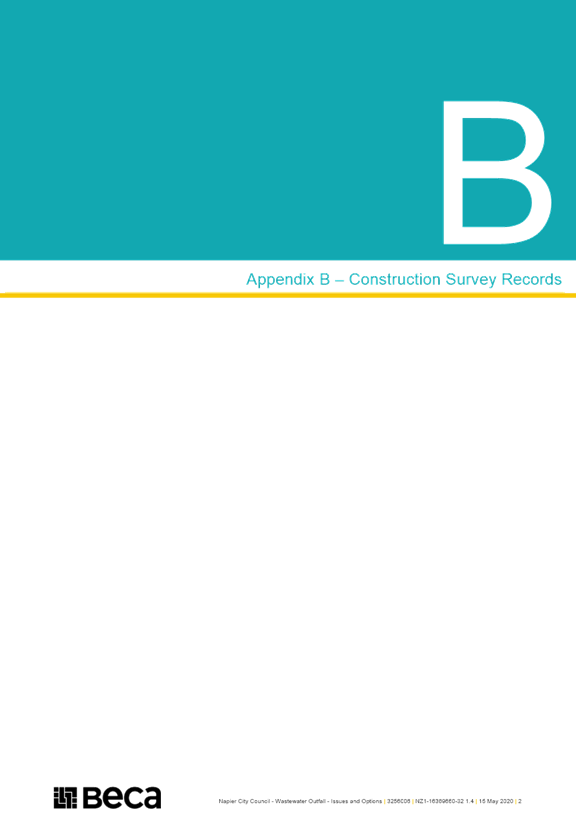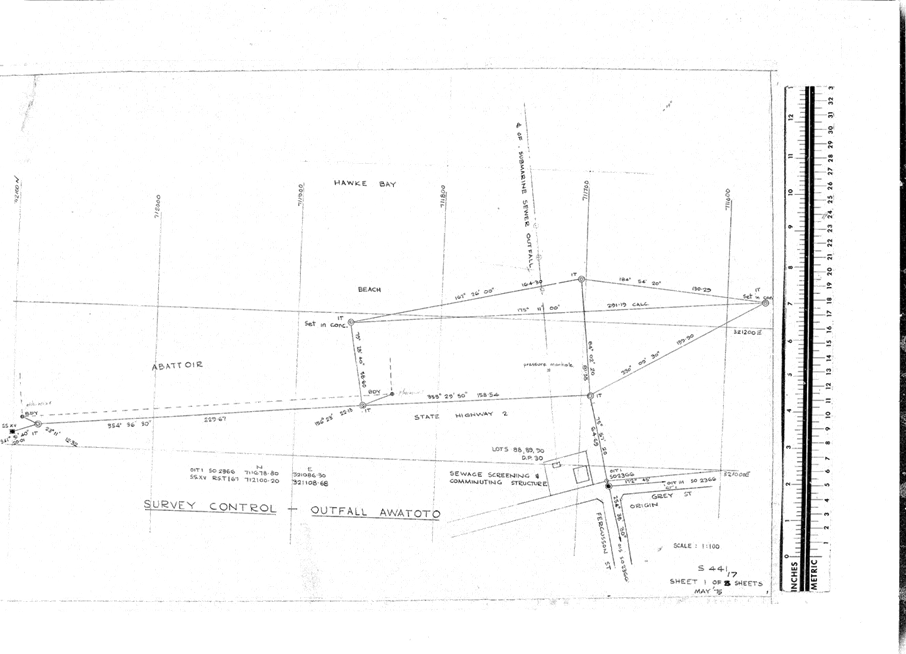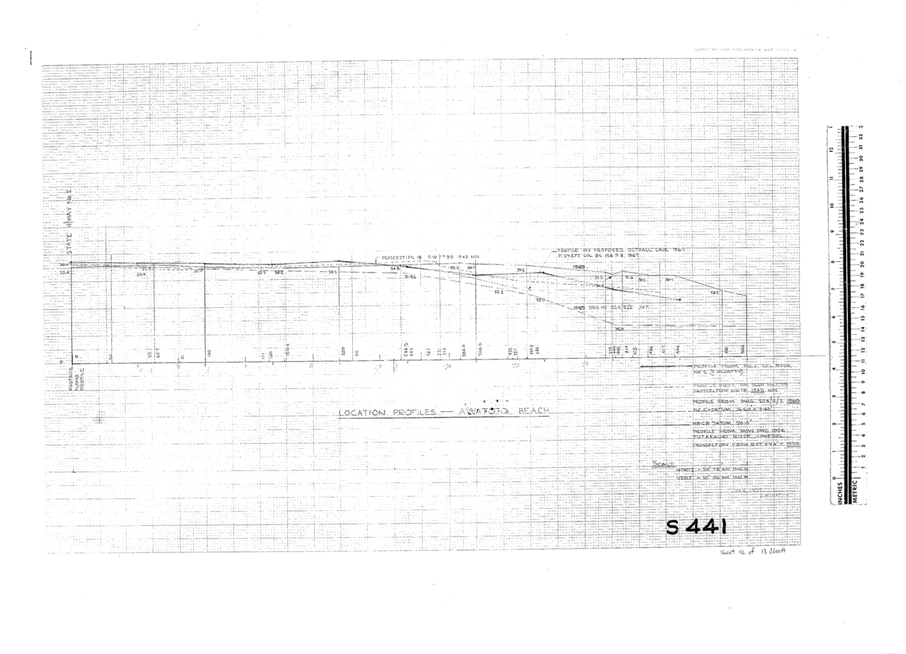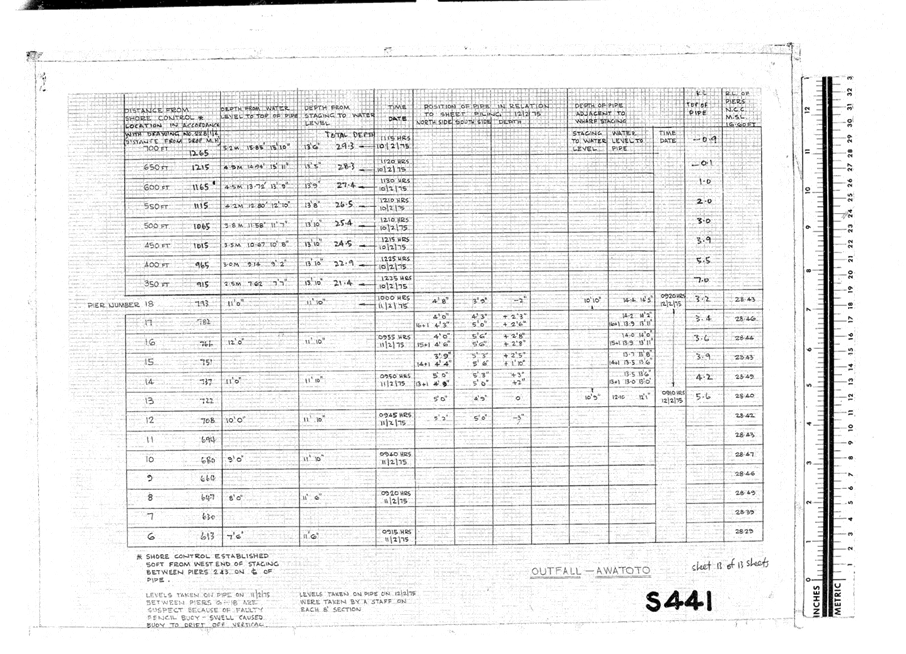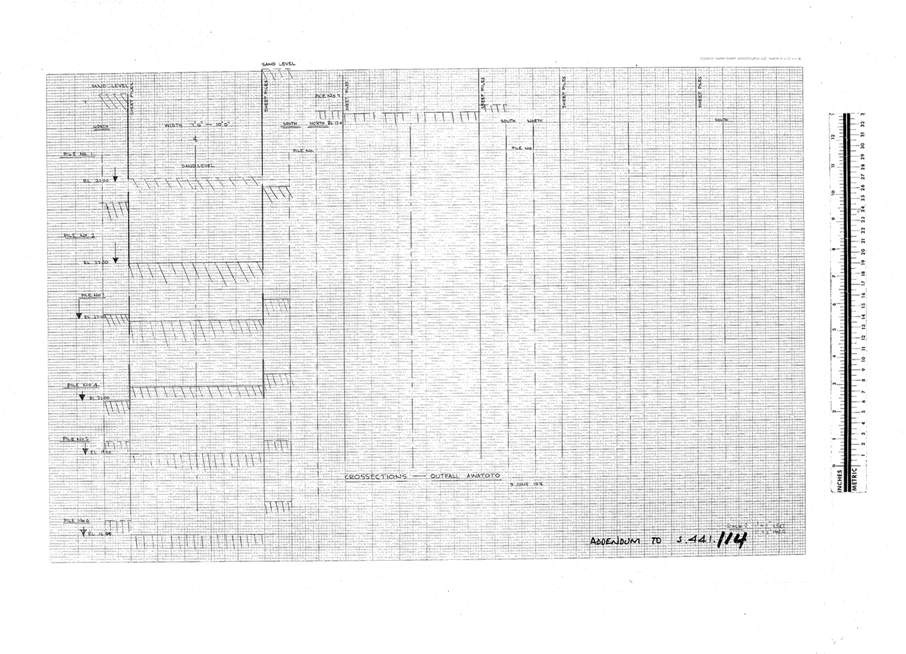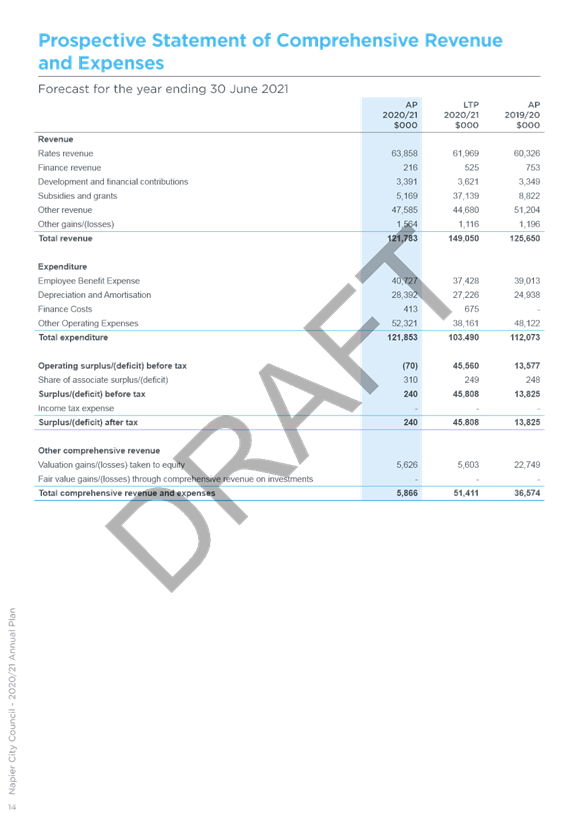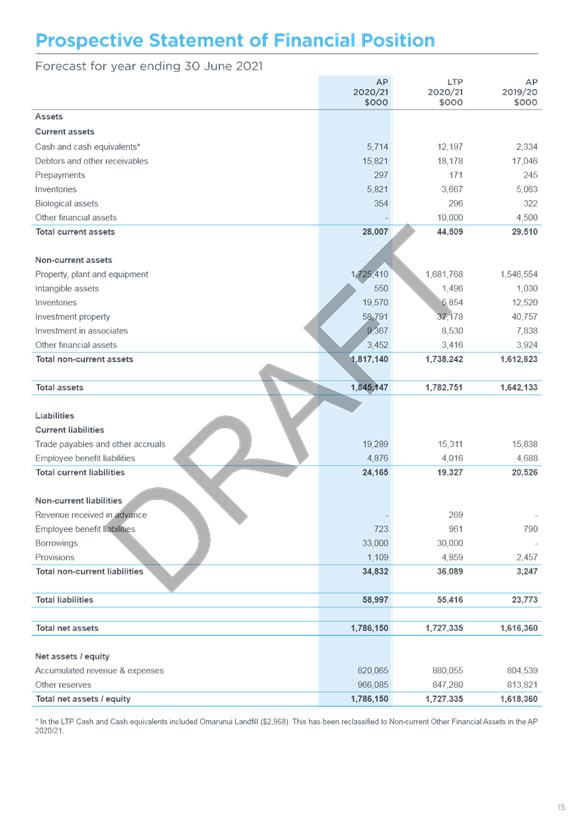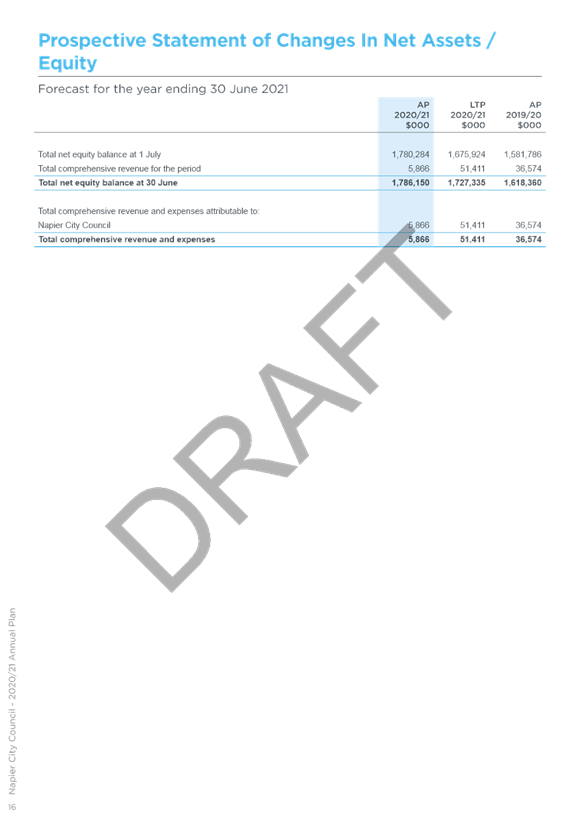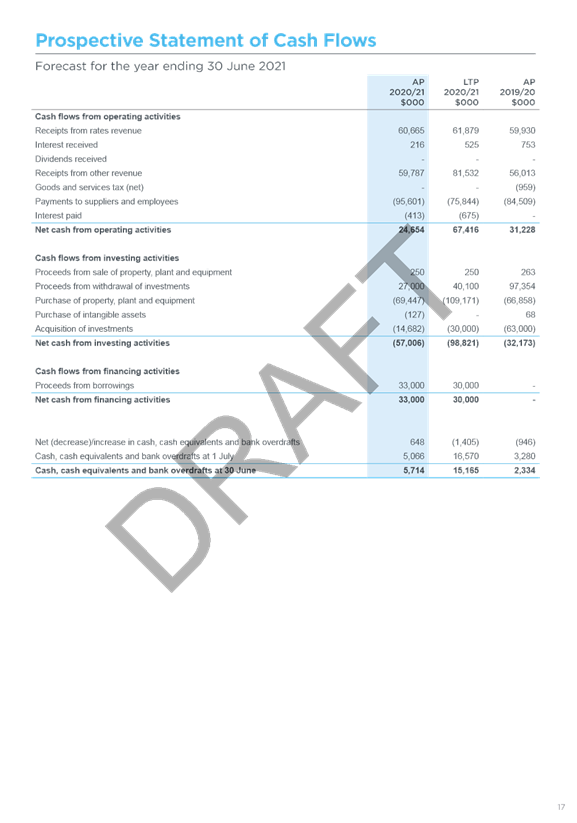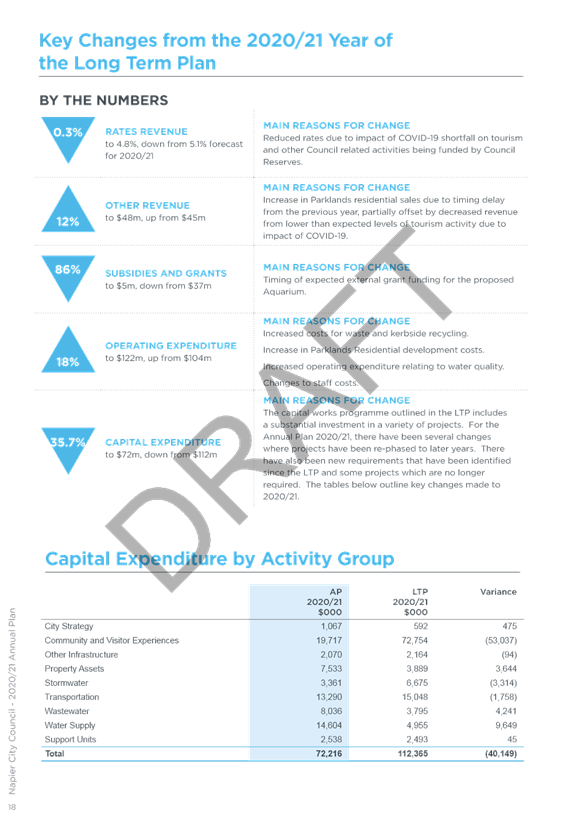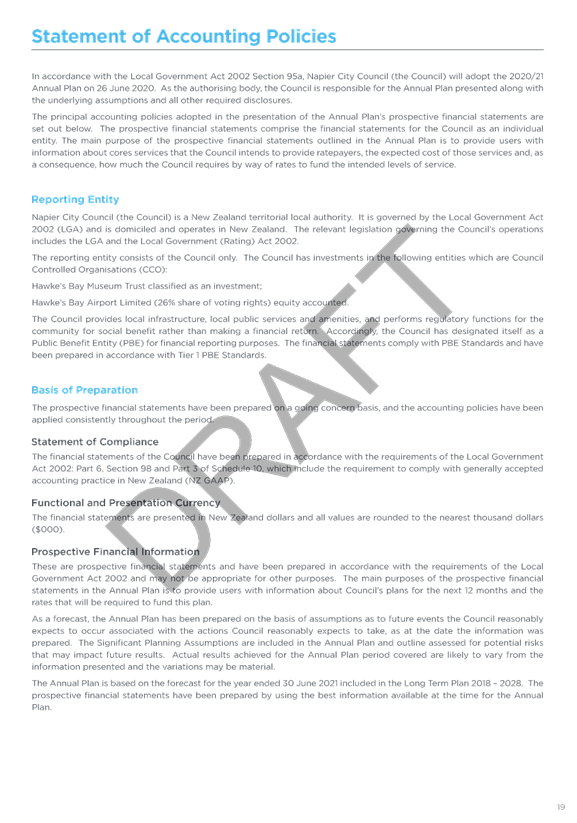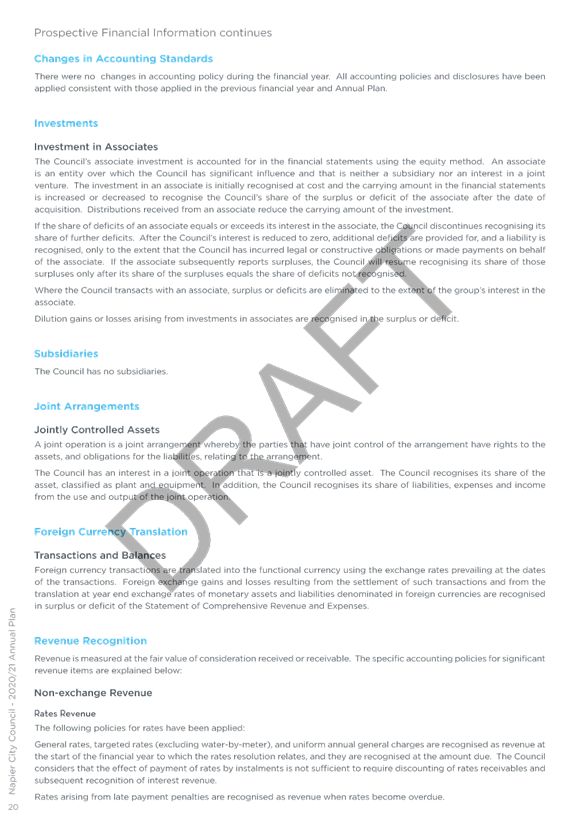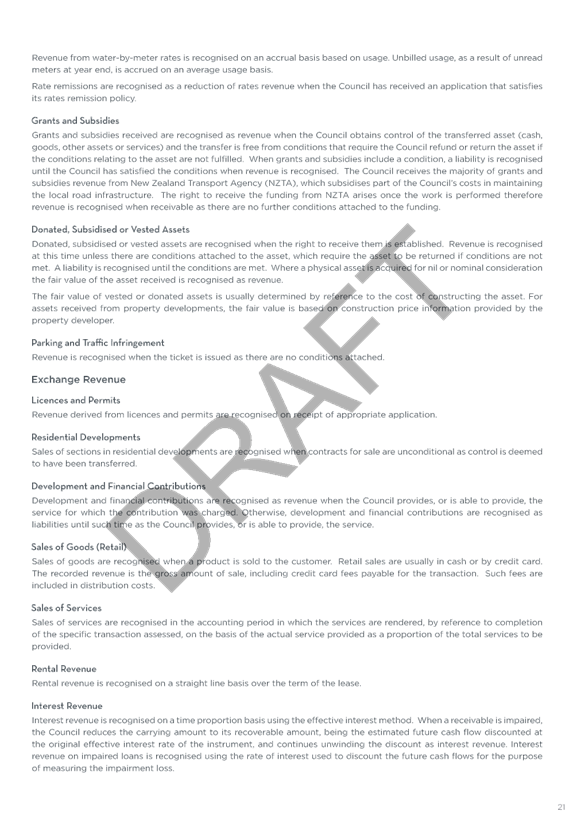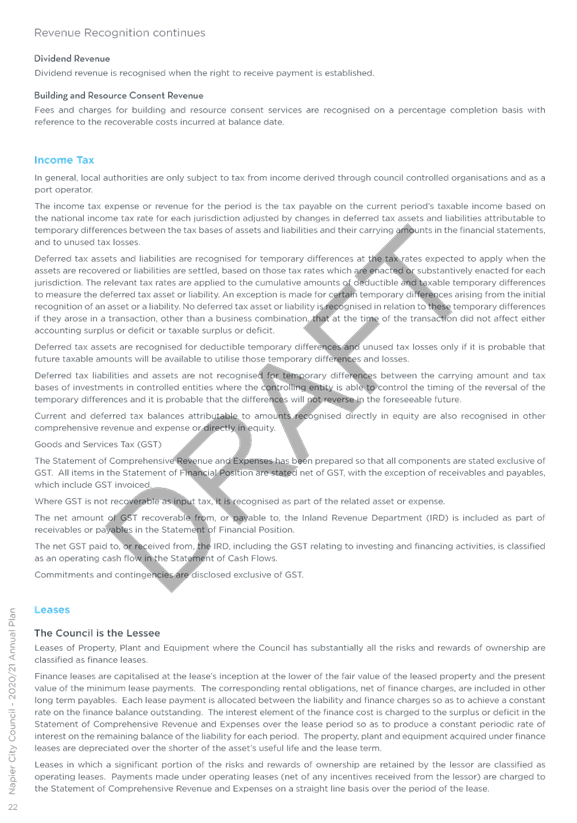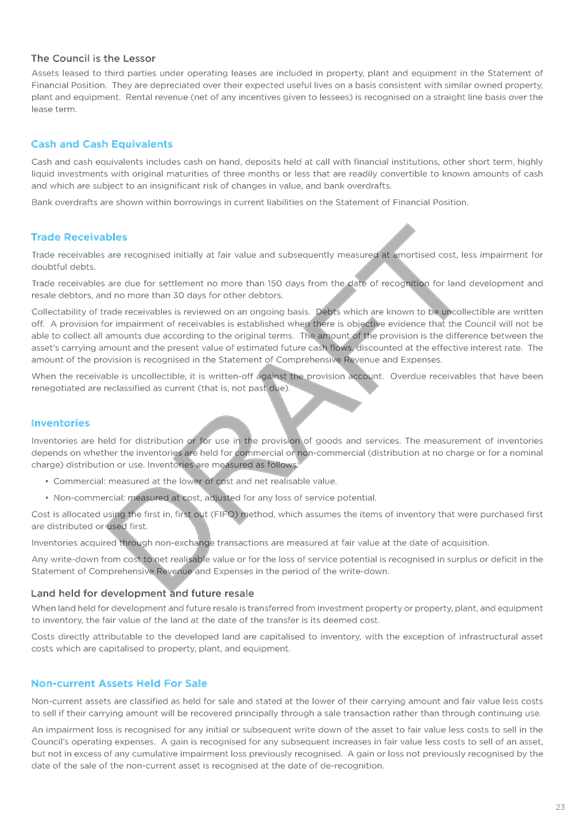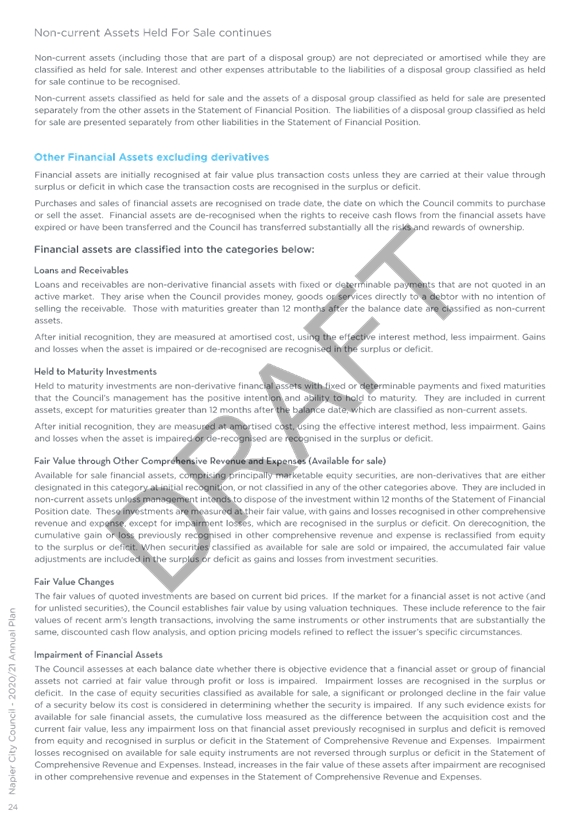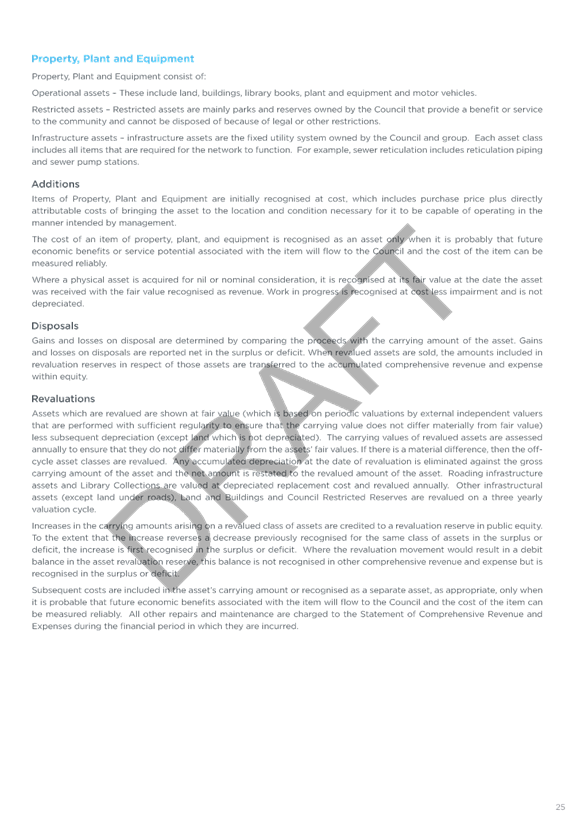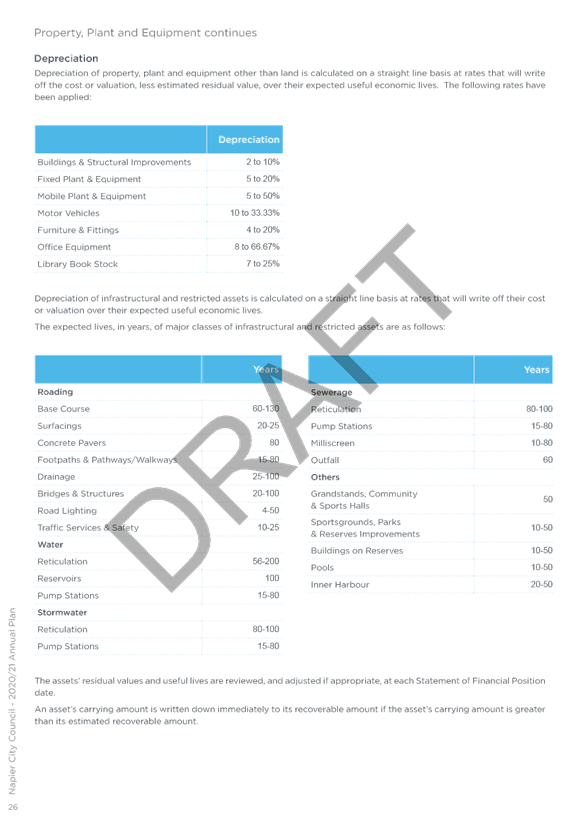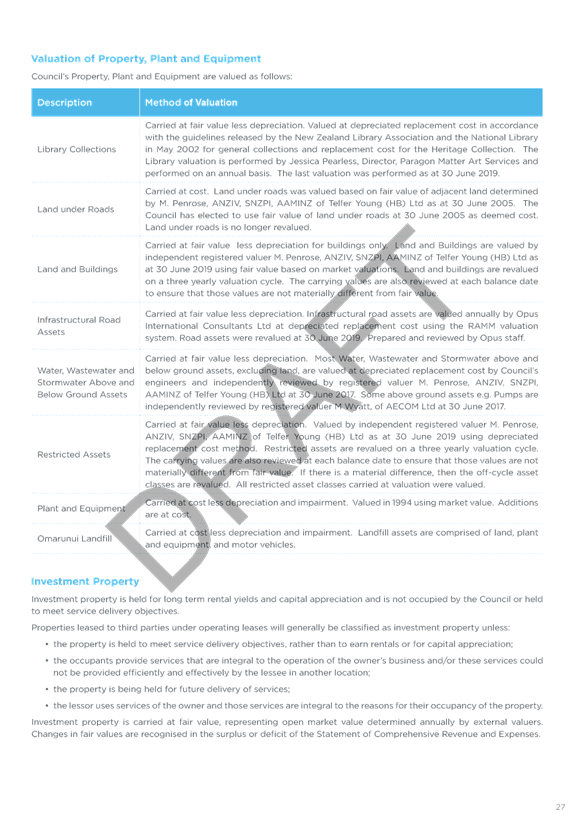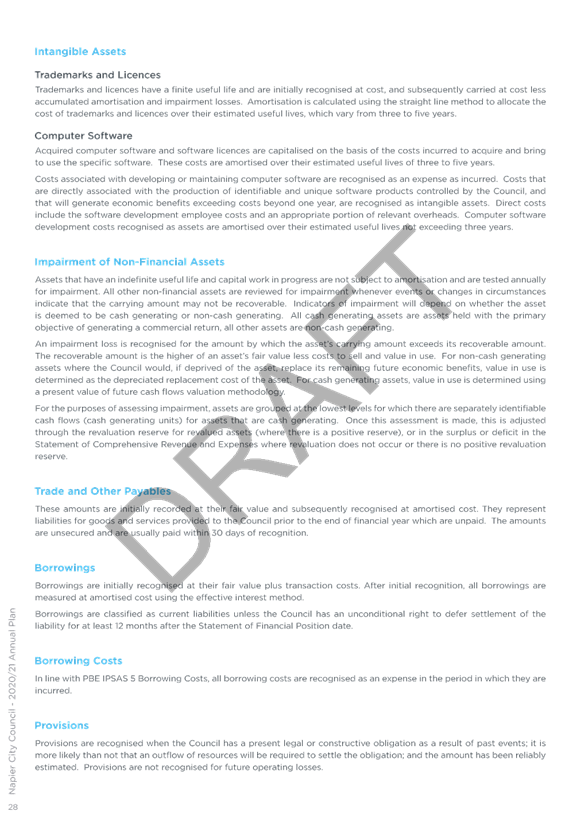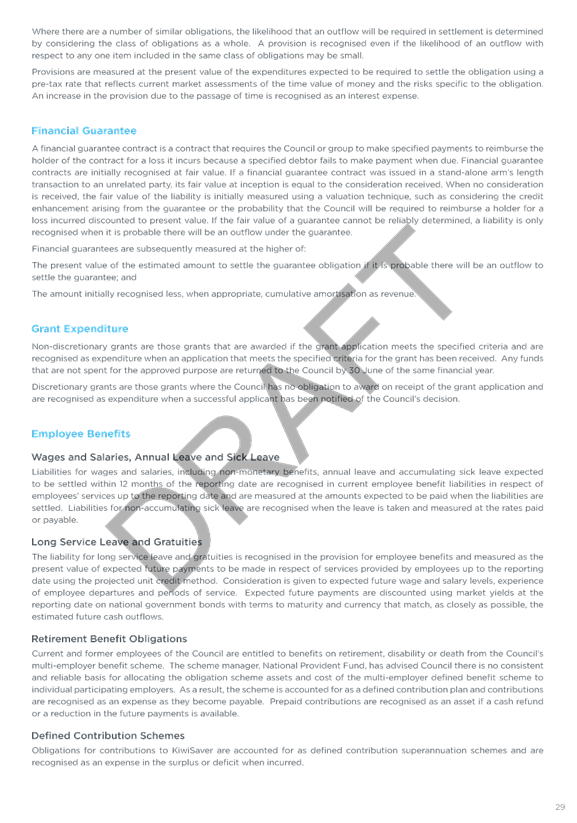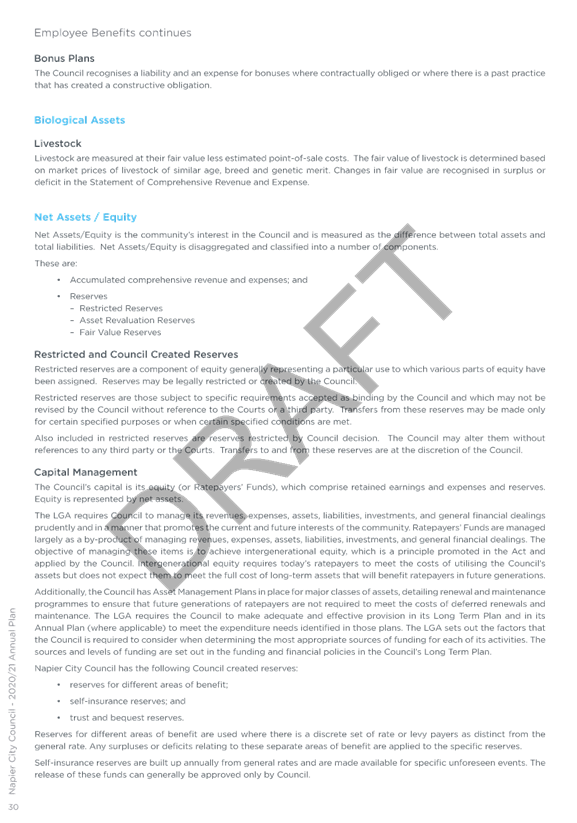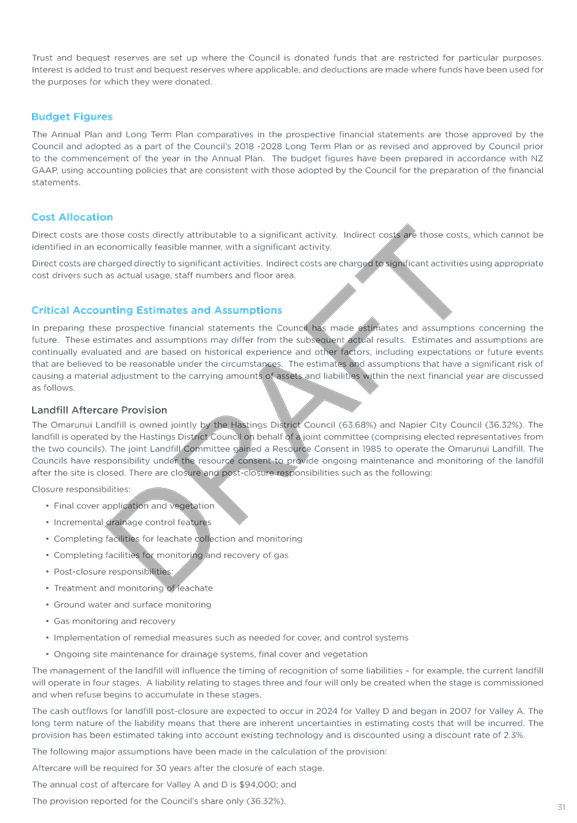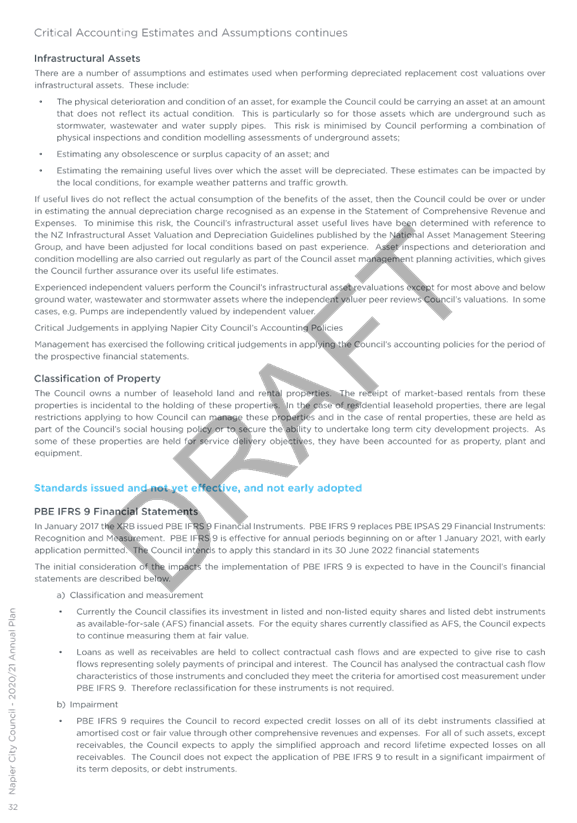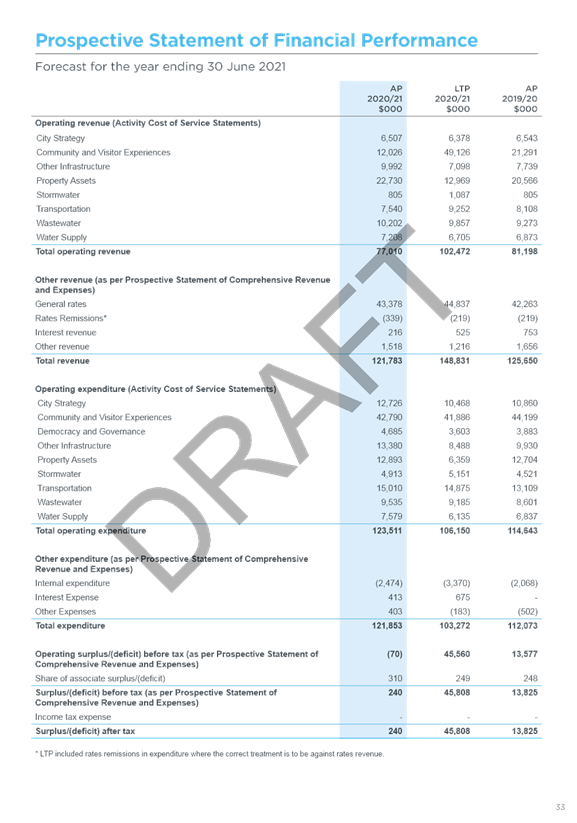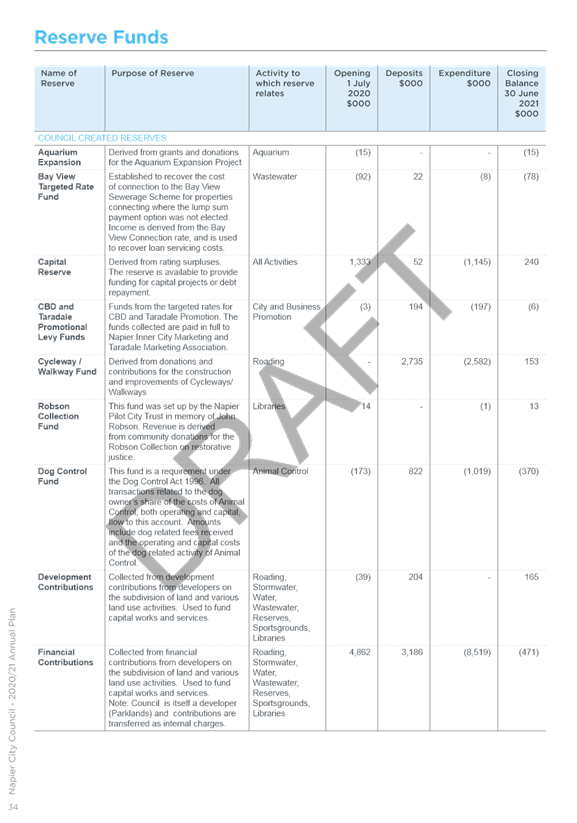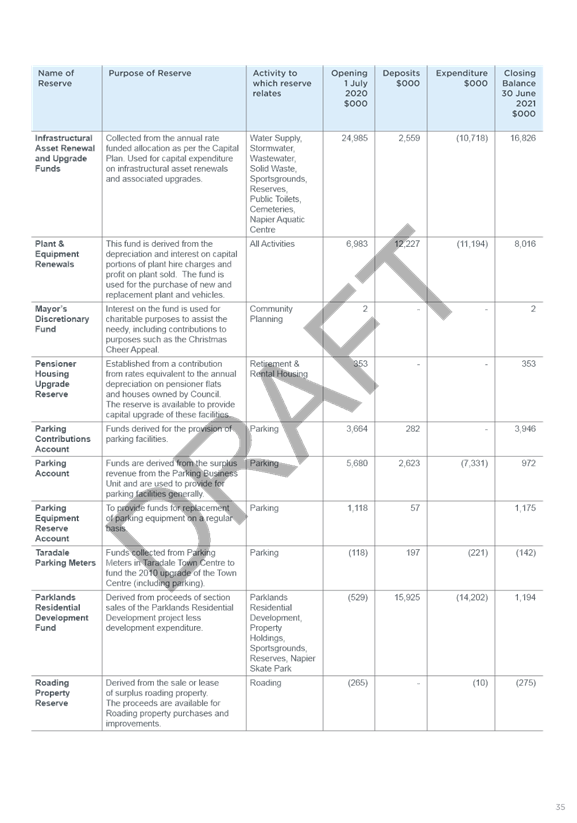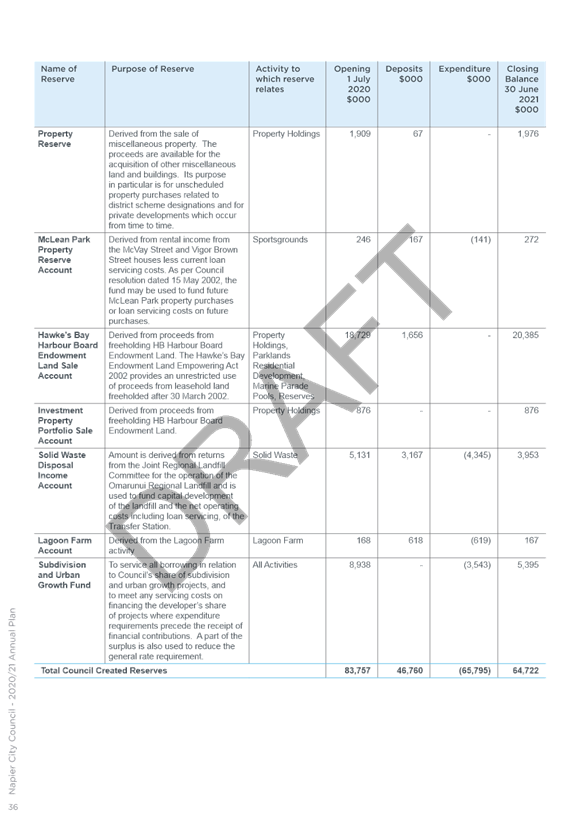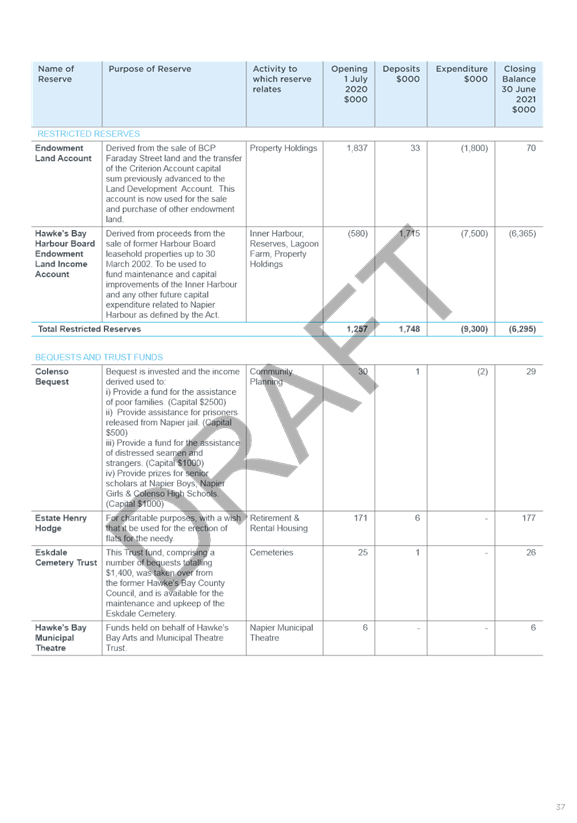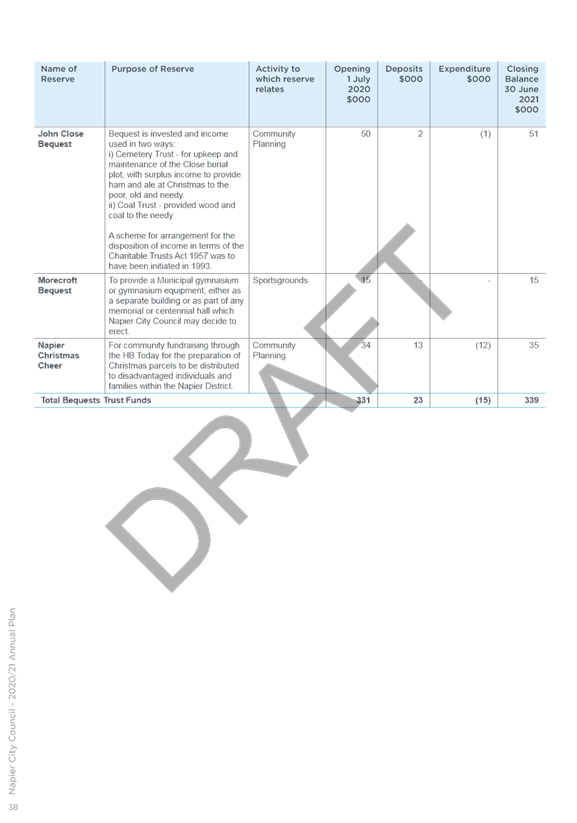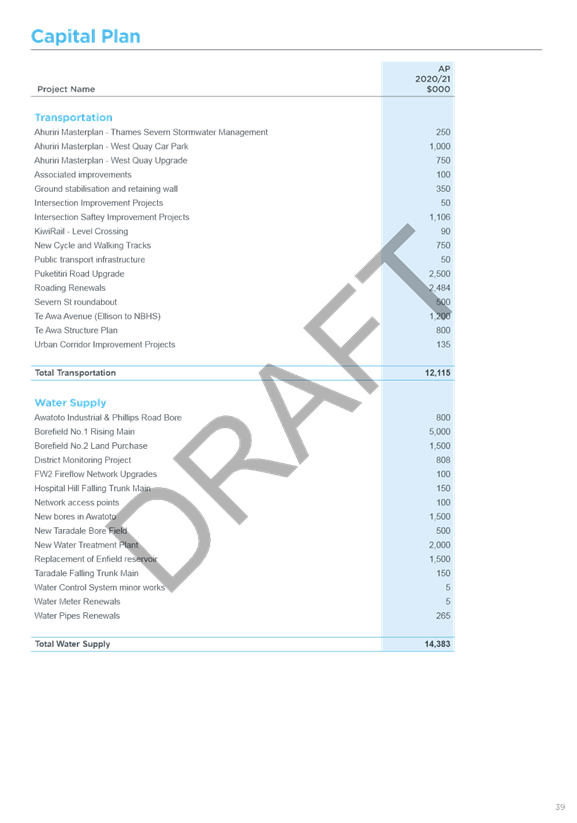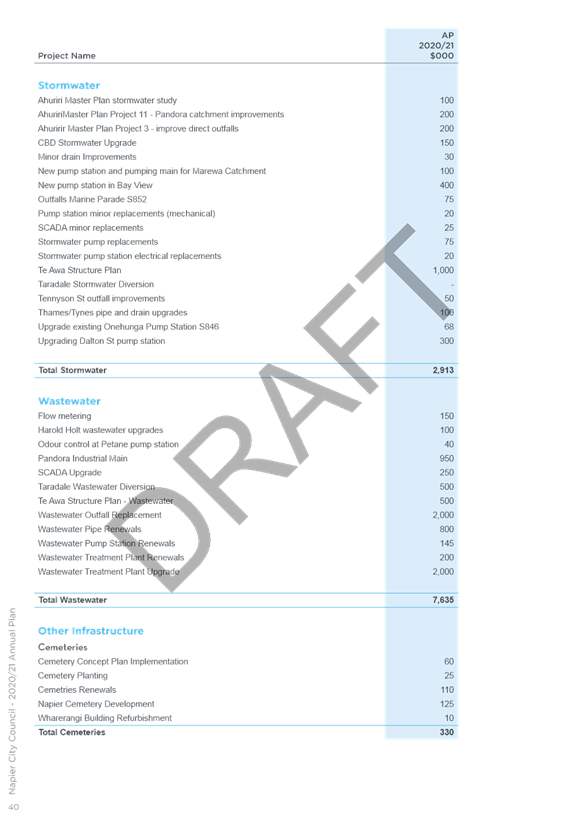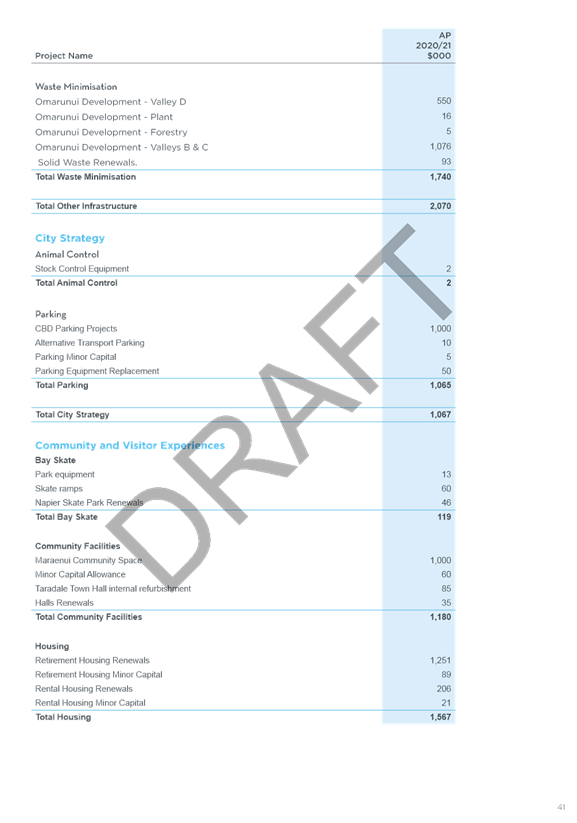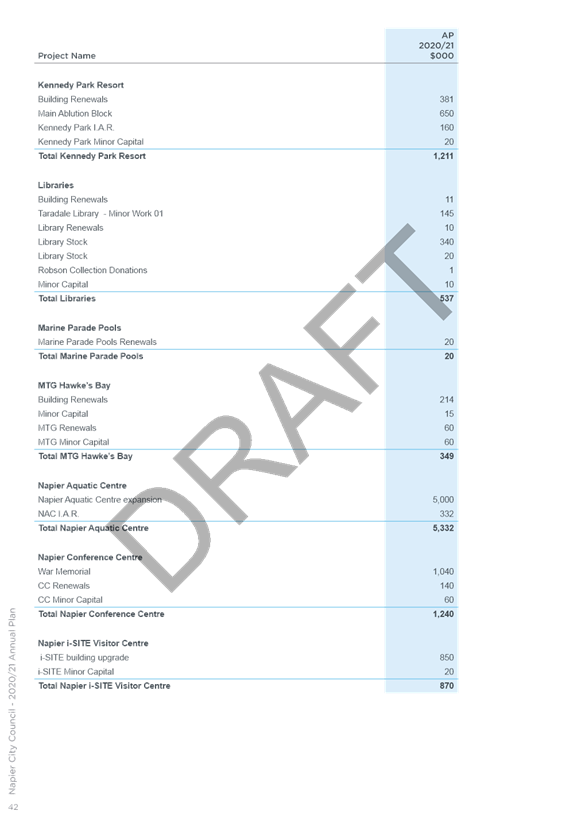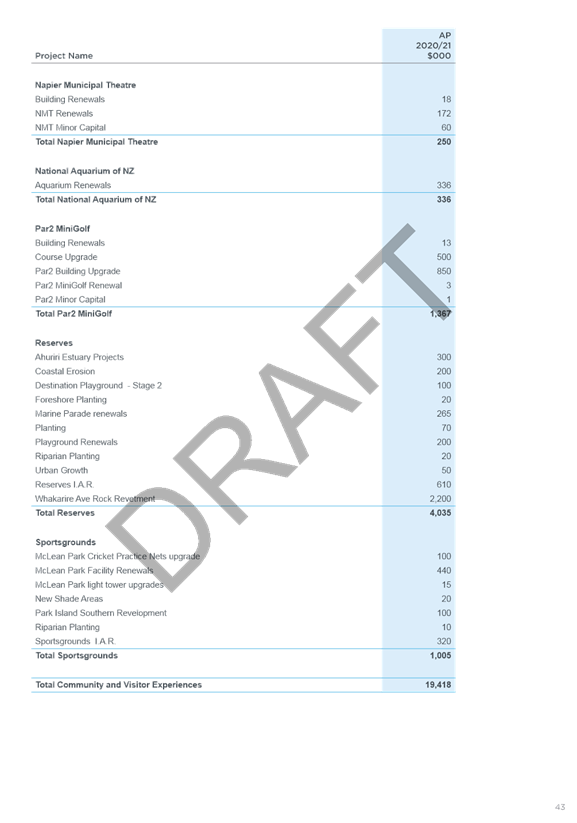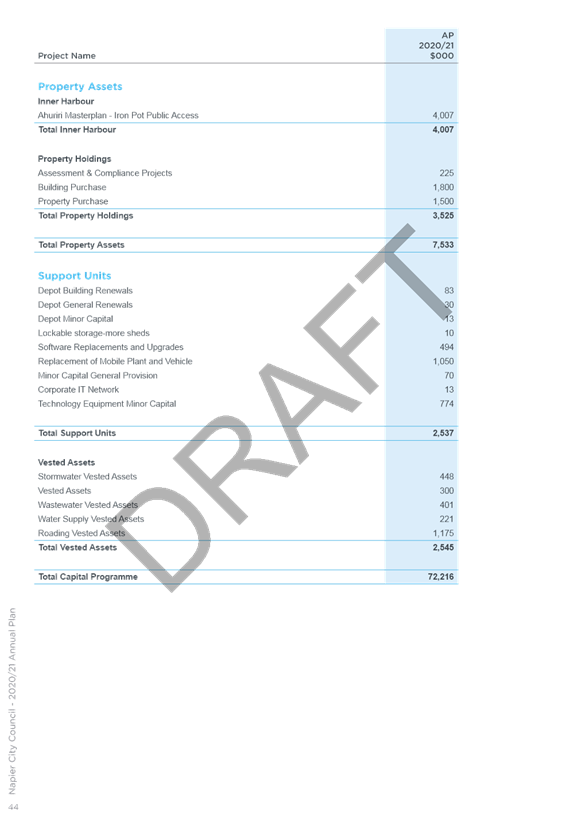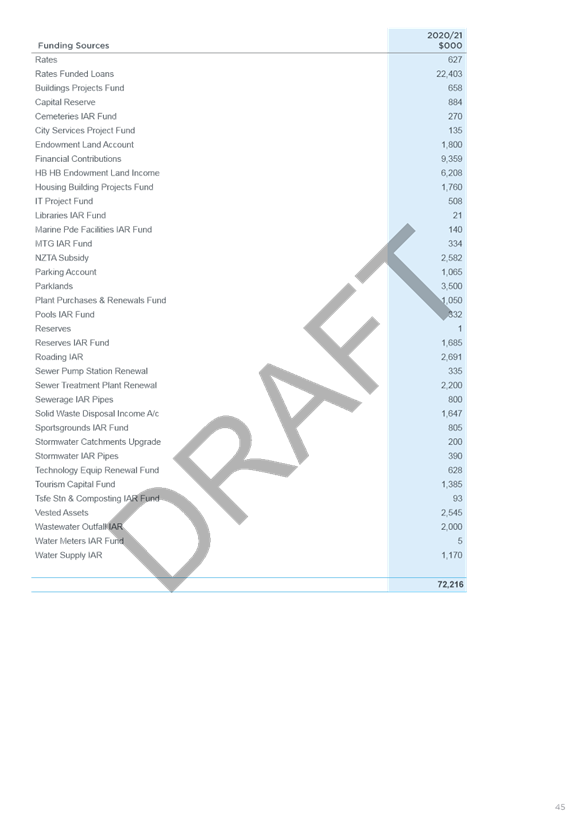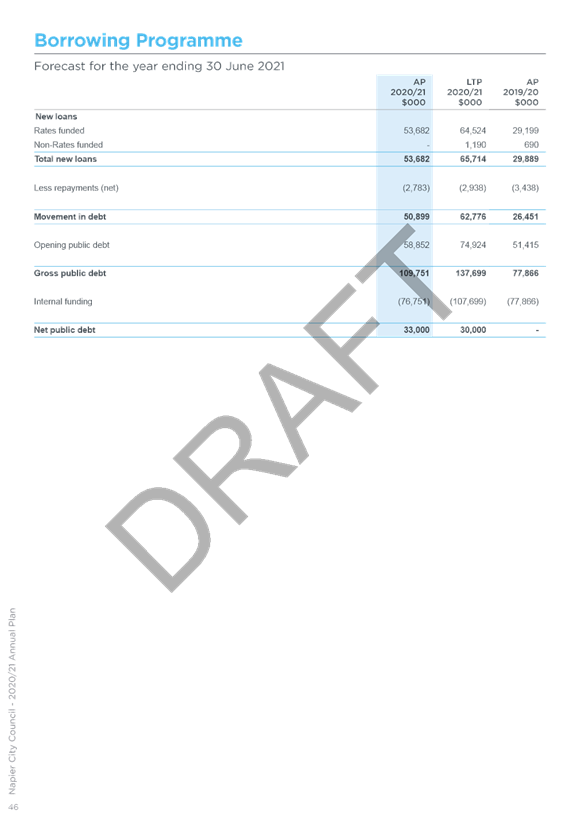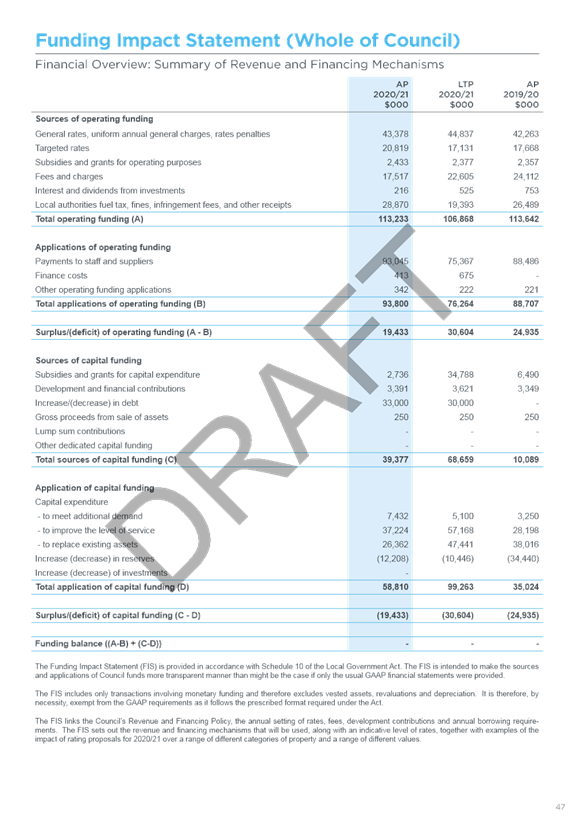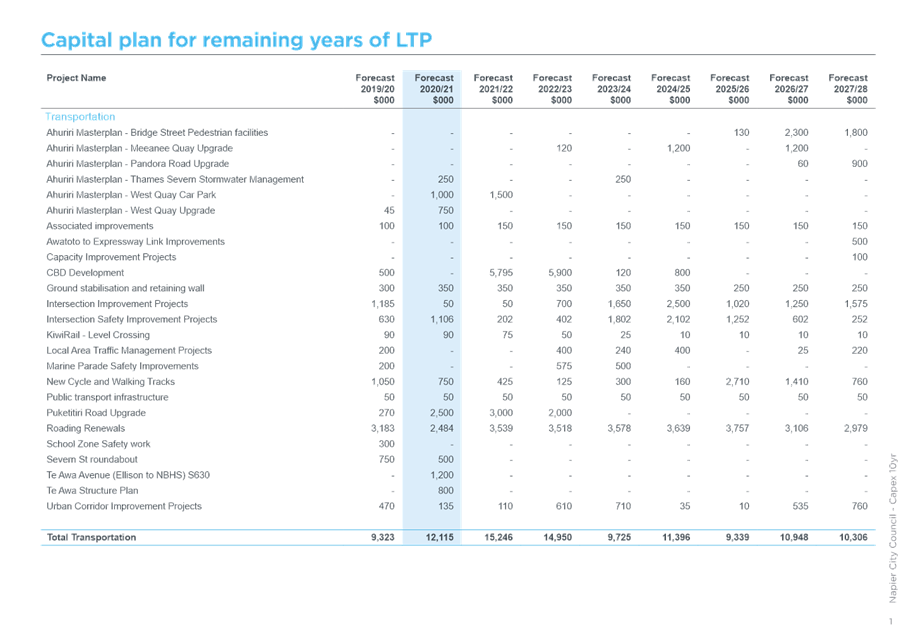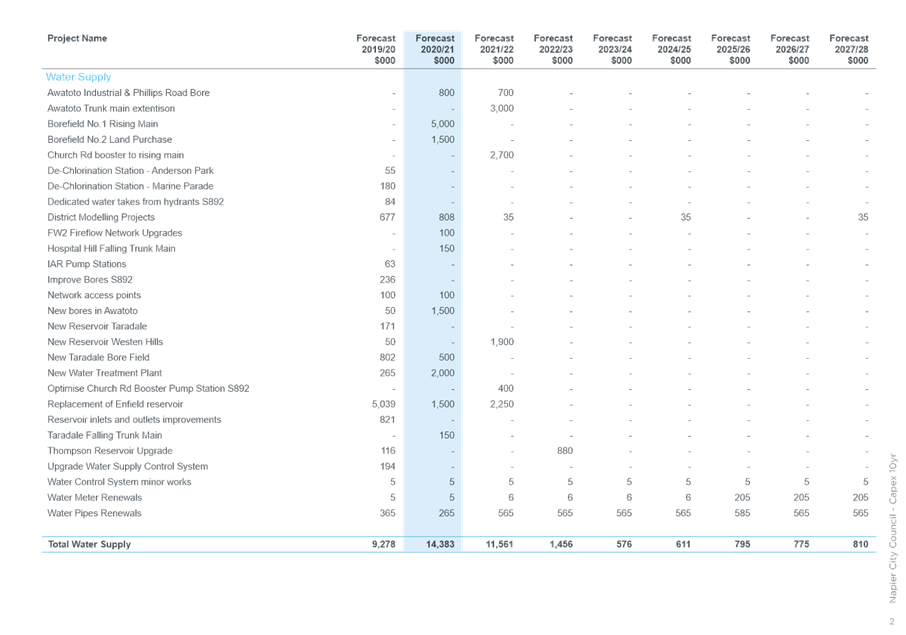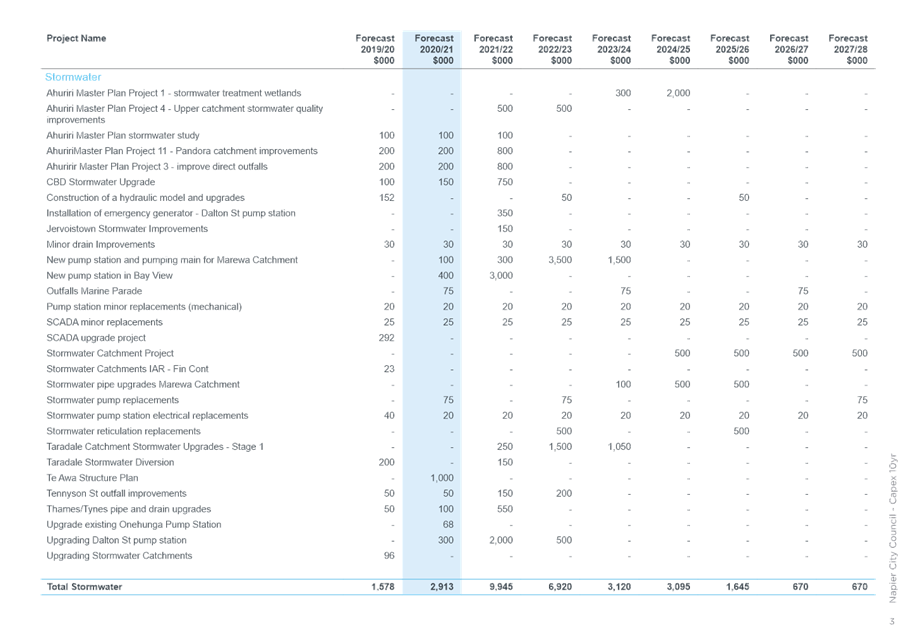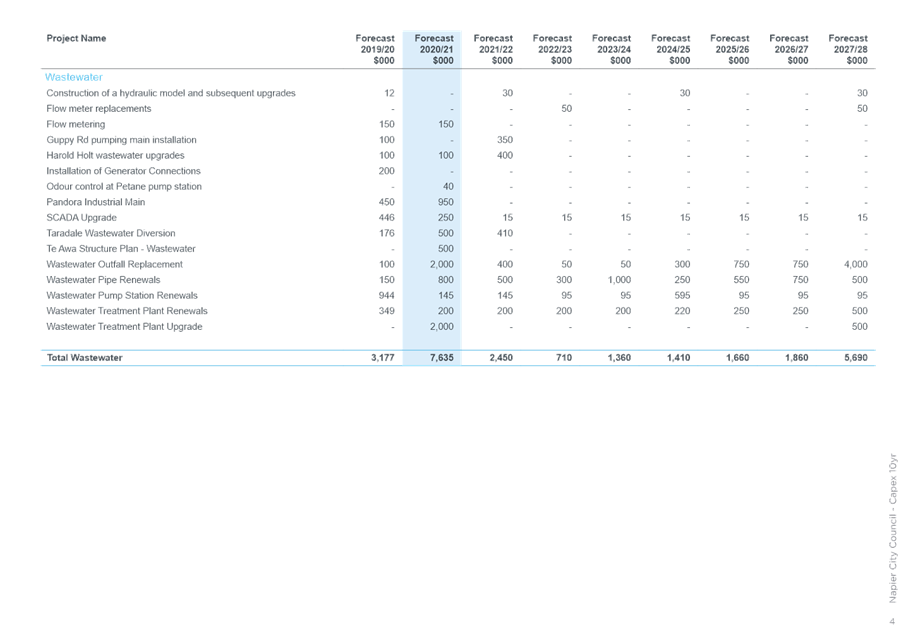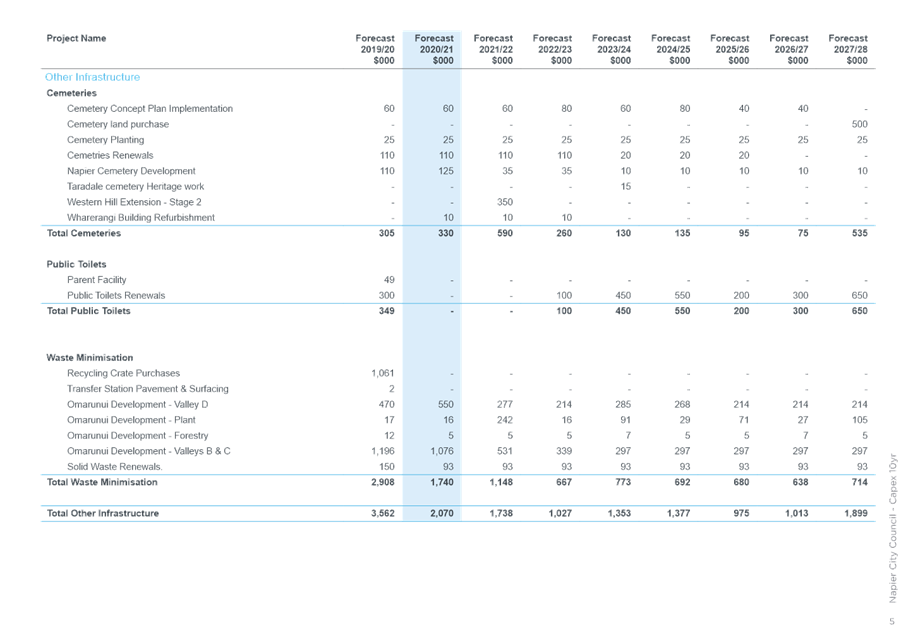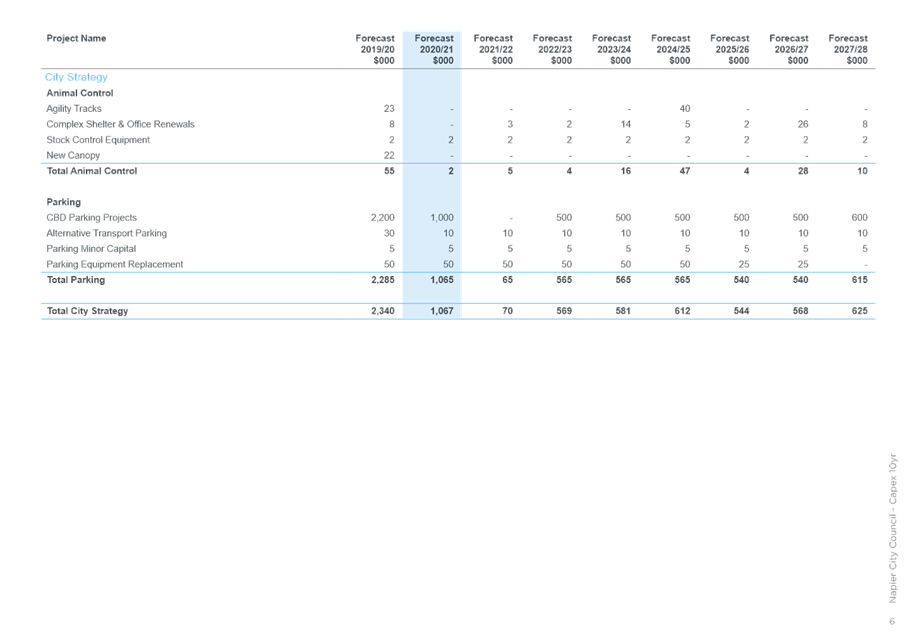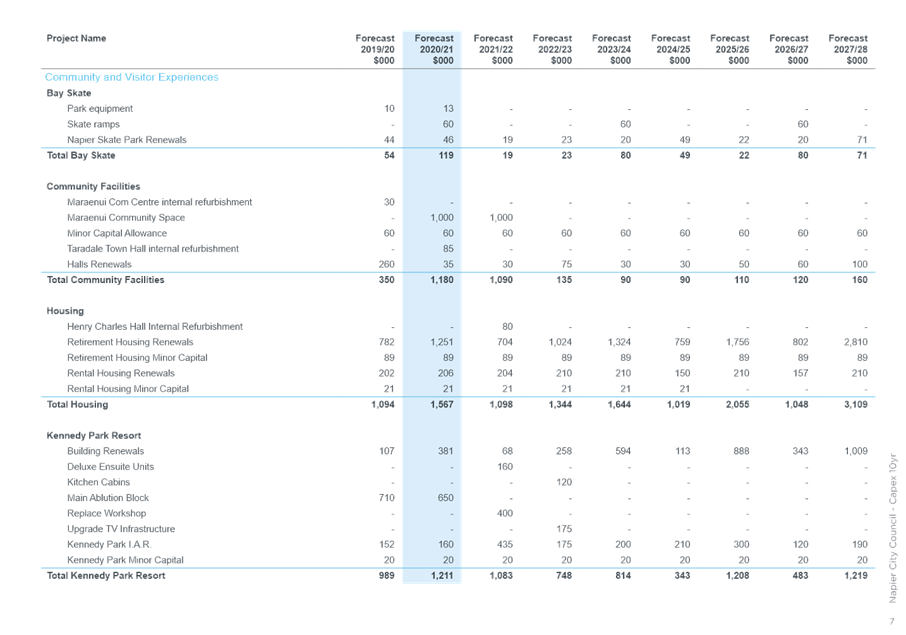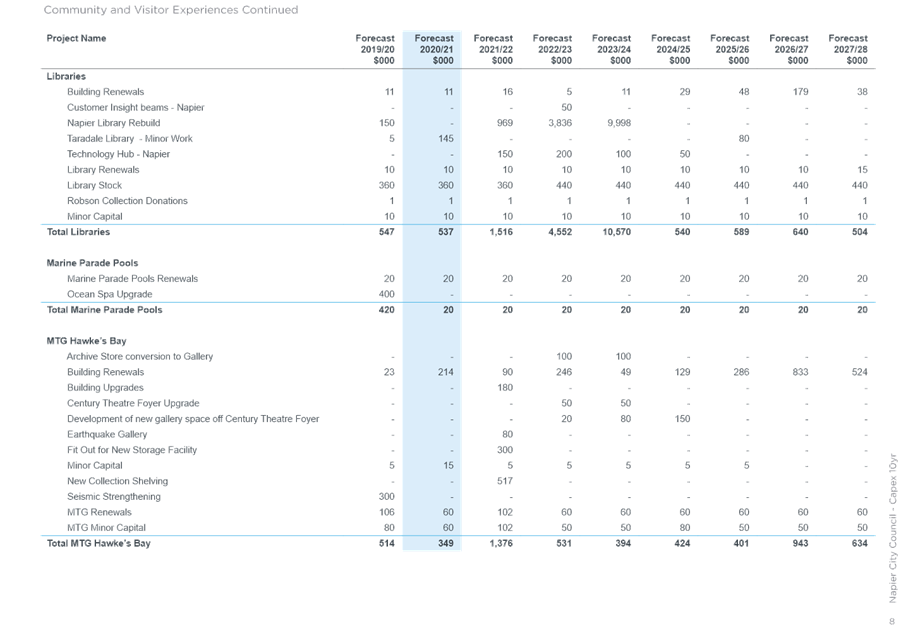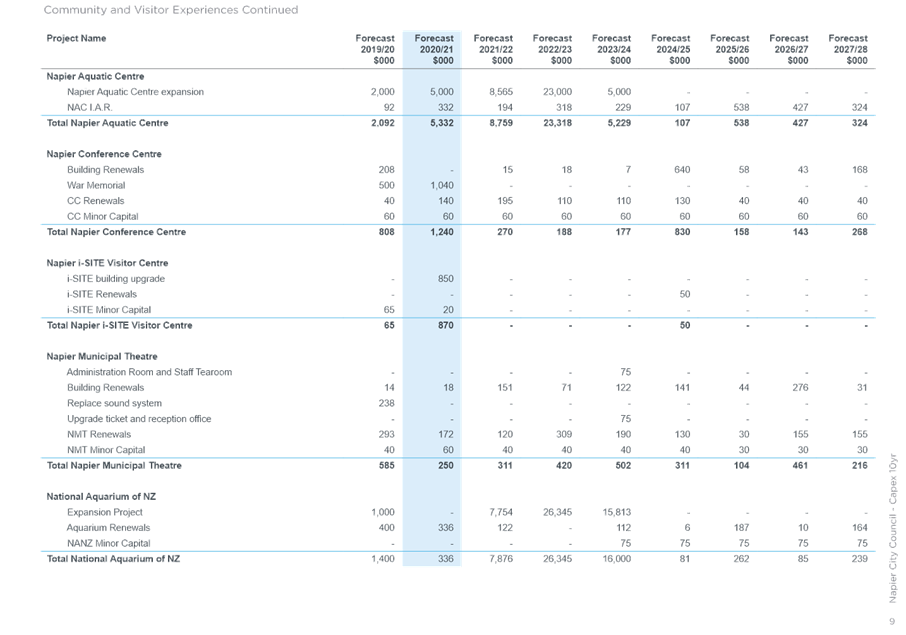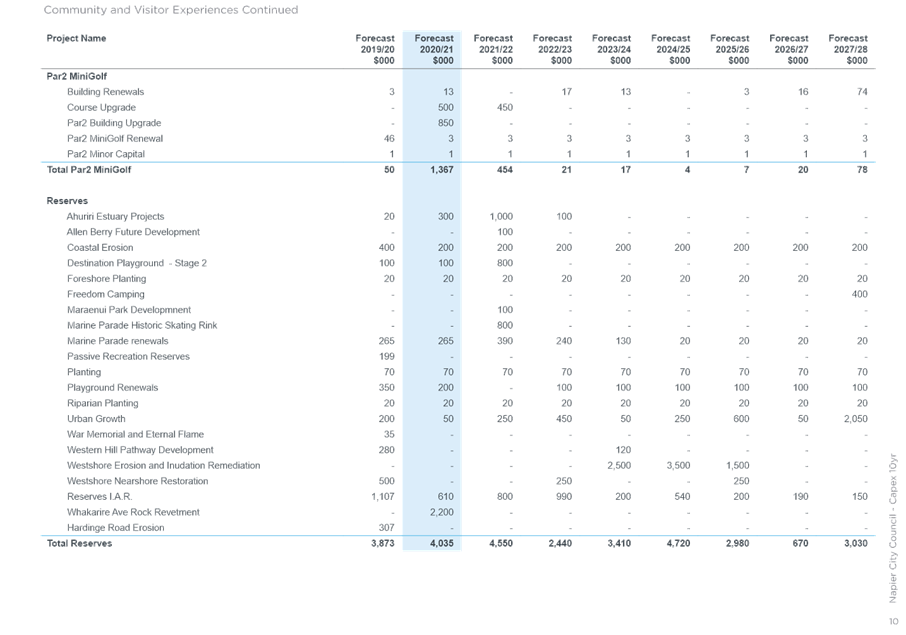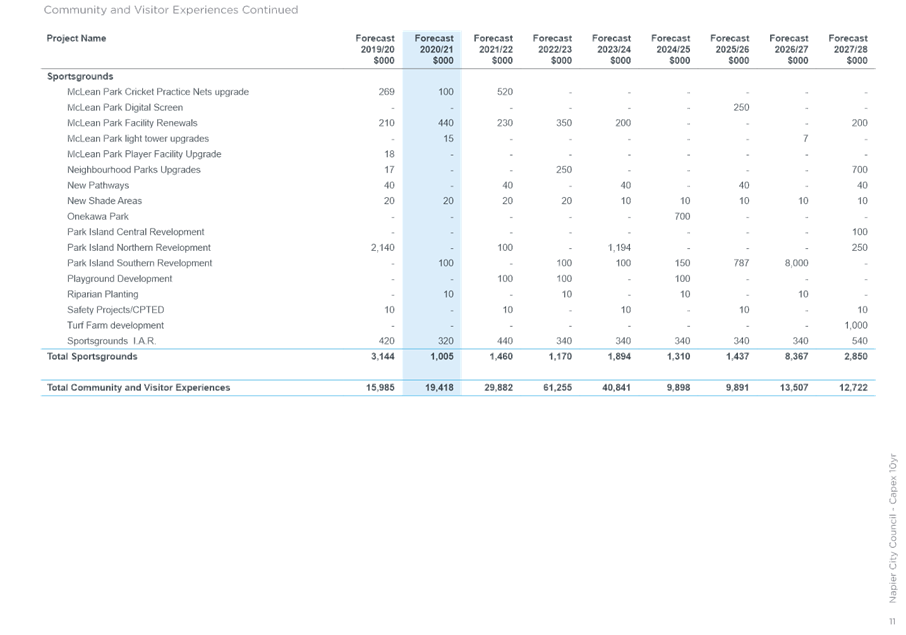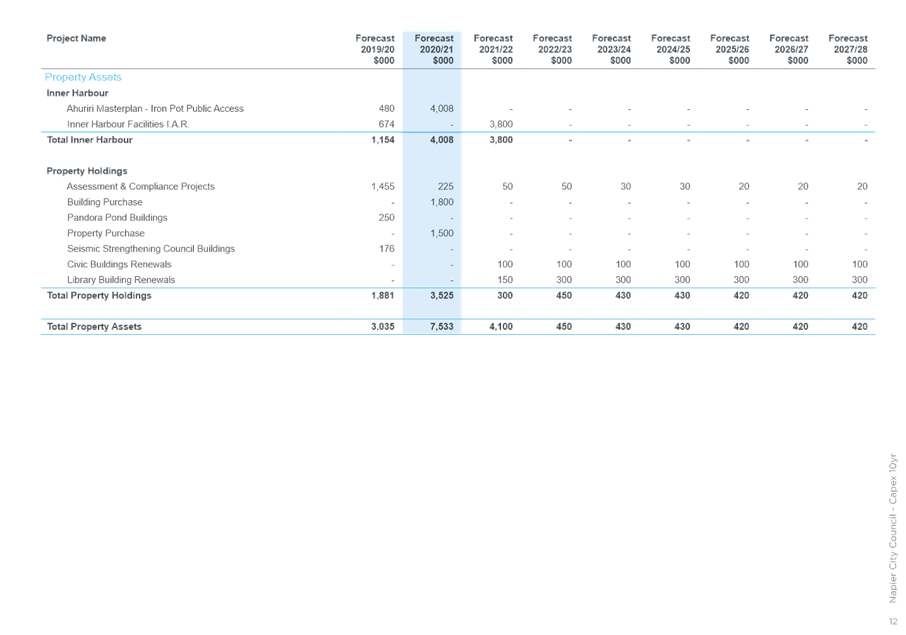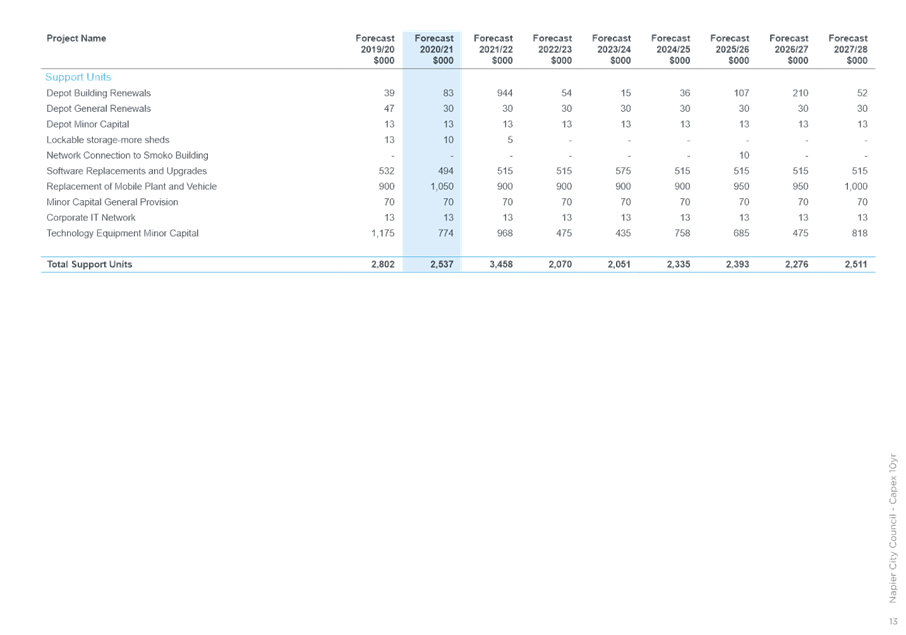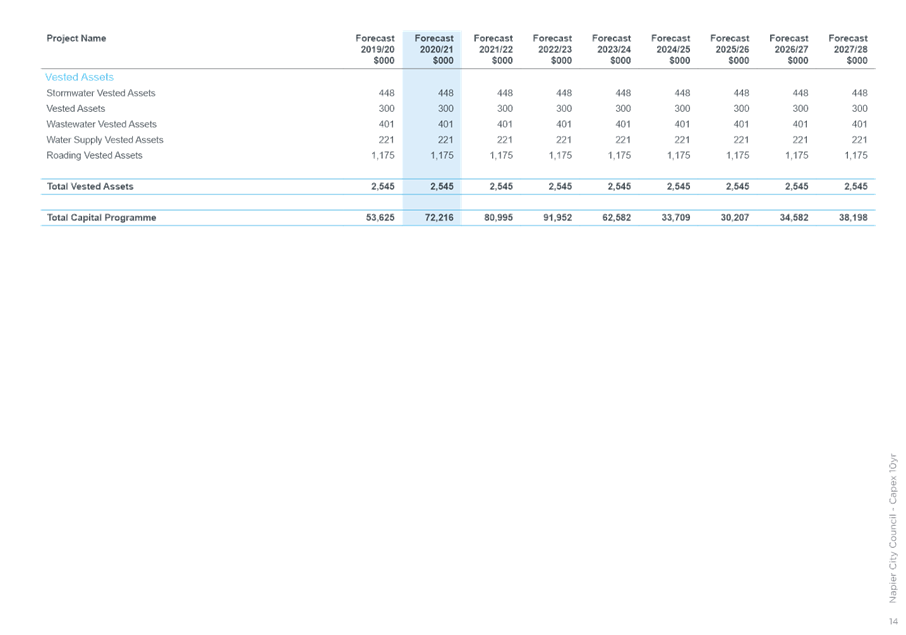|
Audit and Risk Committee - 12 June 2020 - Attachments
|
Item 4
Attachments d
|

|
Rates
Remission Policy
|
|
Approved by
|
Pending Approval by Council
|
|
Department
|
Finance
|
|
Original Approval Date
|
30 June 2019
|
Review Approval Date
|
June 2020
|
|
Next Review Deadline
|
June 2023
|
Document ID
|
|
|
Relevant Legislation
|
Local Government Act 2002, Local Government
(Rating) Act 2002
|
|
NCC Documents Referenced
|
Published in the Long Term Plan 2018-2028
which was reviewed between March/Apr 2018 and adopted on 29-06-18
Reviewed and amended as part of 2019/20
Annual Plan
Reviewed and amended as part of 2020/21
Annual Plan
|
Purpose
To enable Council to remit all or part of
the rates on a rating unit under Section 85 of the Local Government (Rating)
Act 2002 where a Rates Remission Policy has been adopted and the conditions and
criteria in the policy are met.
Policy
1. Remission of Penalties
Objective
The objective of this part of the Rates
Remission Policy is to enable Council to act fairly and reasonably in its
consideration of rates which have not been received by the Council by the
penalty date due to circumstances outside the ratepayer’s control.
Conditions and Criteria
Penalties incurred will be automatically
remitted where Council has made an error which results in a penalty being
applied.
Remission of one penalty will be
considered in any one rating year where payment has been late due to
significant family disruption. This will apply in the case of death, illness,
or accident of a family member, at about the times rates are due.
Remission of the penalty will be
considered if the ratepayer forgets to make payment, claims a rates invoice was
not received, is able to provide evidence that their payment has gone astray in
the post, or the late payment has otherwise resulted from matters outside their
control. Each application will be considered on its merits and remission will
be granted where it is considered just and equitable to do so
Remission of a penalty will be considered
where sale has taken place very close to due date, resulting in confusion over
liability, and the notice of sale has been promptly filed, or where the
solicitor who acted in the sale for the owner acted promptly but made a mistake
(e.g. inadvertently provided the wrong name and address) and the owner cannot
be contacted. Each case shall be treated on its merits.
Penalties will also be remitted based on
the application, by officers, of Council criteria established after Council has
identified that Significant Extraordinary Circumstances have occurred that
warrants further leniency in relation to the enforcement of penalties that
would otherwise have been payable. The criteria to be applied will be set out
in a council resolution that will be linked to the specific Significant
Extraordinary Circumstances that have been identified by Council.
Penalties will also be remitted where
Council’s Chief Financial Officer considers a remission of the penalty,
on the most recent instalment, is appropriate as part of an arrangement to
collect outstanding rates from a ratepayer.
2. Remission for Residential Land in
Commercial or Industrial Areas
Objective
To ensure that owners of rating
units situated in commercial or industrial areas are not unduly penalised by
the zoning decisions of this Council and previous local authorities.
Conditions and Criteria
To qualify for remission under
this part of the policy the rating unit must:
· Be situated within an area of land that has
been zoned for commercial or industrial use. Ratepayers can determine where
their property has been zoned by inspecting the City of Napier District Plan,
copies of which are available from the Council office.
· Be listed as a ‘residential’
property for differential rating purposes. Ratepayers wishing to ascertain
whether their property is treated as a residential property may inspect the
Council’s rating information database at the Council office.
Rates will be automatically
remitted annually for those properties which had Special Rateable Values
applied under Section 24 of the Rating Valuations Act 1998 up to 30 June 2003,
and for which evidence from Council’s Valuation Service Provider
indicates that, with effect from the 2002 revaluation of Napier City, the land
value has been penalised by its zoning. The amount remitted will be the
difference between the rates calculated on the equivalent special rateable
value provided by the Valuation Service Provider and the rates payable on the
Rateable Value.
Other ratepayers wishing to
claim remission under this part of the policy must make an application in
writing addressed to the Chief Financial Officer.
The application for rates
remission must be made to the Council prior to the commencement of the rating
year. Applications received during a rating year will be applicable from the
commencement of the following rating year. Applications will not be backdated.
Where an application is
approved, the Council will direct its Valuation Service Provider to inspect the
rating unit and prepare a valuation that will treat the rating unit as if it
were a comparable rating unit elsewhere in the district. The ratepayer may be
asked to contribute to the cost of this valuation. Ratepayers should note that
the Valuation Service Provider’s decision is final as there are no
statutory right of objection or appeal for values done in this way.
3. Remission for Land Subject to Special Preservation
Conditions
Objective
To preserve and encourage the
protection of land and improvements which are the subject of special
preservation conditions.
Conditions and Criteria
Rates remission under this Section of the
policy relates to land that is subject to:
· A heritage covenant under the Historic
Places Act 1993; or
· A heritage order under the Resource
Management Act 1991; or
· An open space covenant under the Queen
Elizabeth the Second National Trust Act 1977; or
· A protected private land agreement or
conservation covenant under the Reserves Act 1977; or
· Any other covenant or agreement entered
into by the owner of the land with a public body for the preservation of
existing features of land, or of buildings, where the conditions of the
covenant or agreement are registered against the title to the land and are
binding on subsequent owners of land.
Ratepayers who own Rating Units meeting
this criteria may qualify for remission under this part of the policy.
Rates will automatically be remitted
annually for those properties which had Special Rateable Values applied under
Section 27 of the Rating Valuations Act up to 30 June 2003, and which meet the
above criteria. The amount remitted will be the difference between the rates
calculated on the equivalent special rateable value provided by the Valuation Service
Provider and the rates payable on the Rateable Value.
Other ratepayers wishing to claim
remission under this part of the policy must apply in writing to the Council
office, and must provide supporting documentary evidence of the special
preservation conditions, e.g. copy of the Covenant, Order or other legal
mechanism.
The application for rates remission must
be made to the Council prior to the commencement of the rating year.
Applications received during a rating year will be applicable from the commencement
of the following rating year.
Applications for remission under this part
of the policy will be approved by the Council. The Council may specify certain
conditions before remission will be granted. Applicants will be required to
agree in writing to these conditions and to pay any remitted rates if the
conditions are violated.
Where an application is approved, the
Council will direct its Valuation Service Provider to inspect the Rating Unit
and provide a special valuation. The ratepayer may be asked to contribute to
the cost of this valuation. Ratepayers should note that the Valuation Service
Provider’s decision is final as there is no statutory right of objection
or appeal for values done in this way.
The equivalent special rateable value will
be determined by the Valuation Service Provider on the assumption that:
· The actual use to which the land is being
put at the date of valuation will be continued; and
· Any improvements on the land will be
continued and maintained or replaced in order to enable the land to continue to
be so used.
It will be assessed taking into account
any restriction on the use that may be made of the land imposed by the
mandatory preservation of any existing tenements, hereditaments, trees,
buildings, other improvements, and features.
4. Remission of Uniform Annual General Charges (UAGC) and
Targeted Rates of a Fixed Amount on Rating Units Owned by the Same Owner
Objective
To provide for relief from UAGC and
Targeted Rates of a fixed amount per Rating Unit or Separately Used or
Inhabited Parts of a Rating Unit, where two or more Rating Units are owned by
the same person or persons, and are:
· part of a subdivision plan which has been
deposited for separate lots, or separate legal titles exist; or
· but the Rating Units may not necessarily be
used jointly as a single unit, and each Rating Unit does not benefit separately
from the services related to the UAGC and Targeted Rates.
Conditions and Criteria
Remission of UAGC and Targeted Rates of a
fixed amount applies in the following situations:
· Unsold subdivided land, where as a result
of the High Court decision of 20 November 2000 ‘Neil Construction and
others vs. North Shore City Council and others’, each separate lot or
title is treated as a separate Rating Unit, and such land is implied to be not
used as a single unit.
All remissions under this part of the
policy will be approved by the Chief Financial Officer.
5. Remission for Water Rates (by meter)
Objective
To provide ratepayers with a measure of relief
by way of partial rates remission where, as a result of the existence of a
water leak on the Rating Unit which they occupy the payment of fuller rates is
inequitable, or where officers are convinced that there are errors in the data
relating to water usage.
Conditions
and Criteria
· The existence of a significant leak on the occupied
Rating Unit has been established and there is evidence that steps have been
taken to repair the leak as soon as possible after the detection, or officers
have reviewed the usage data and are convinced that the usage readings are so
abnormal as to require adjustment.
· The Council or its delegated officer(s) as determined
from time to time and set out in the Council’s delegations register shall
determine the extent of any remission based on the merits of each situation.
6. Remission to smooth the effects of change in rates on
individual or groups of properties
Objective
To enable Council to provide rates
remission where, as a result of a change in Council policy or other change that
results in a significant increase in rates, Council decides it is equitable to
smooth or temporarily reduce the impacts of the change by reducing the amount
payable.
Conditions and Criteria
· Remission of part of the value based rates to enable
the impact of a change in rates to be phased in over a period of no more than 3
years.
To continue with any existing rates
adjustment where, due to change in process, policy or legislation Council
considers it equitable to do so subject to a maximum limit of 3 years to a
remission made under this clause in the policy.
7. Remission for Special Circumstances
Objective
To enable Council to provide rates
remission for special and unforeseen circumstances, where it considers relief
by way of rates remission is justified in the circumstances.
Conditions and Criteria
Applications for rates remission must be
made in writing by the ratepayer or their authorised agent.
Each circumstance will be considered by
Council on a case by case basis. Where necessary, Council consideration and
decision will be made in the Public Excluded part of a Council meeting.
The terms and conditions of remission will
be decided by Council on a case by case basis. The applicant will be advised in
writing of the outcome of the application.
8. Remission of Rates in Response to Significant
Extraordinary Circumstances being identified by Council.
Objective
To enable Council to provide rates
remission to assist ratepayers in response to Significant Extraordinary
Circumstances impacting Napier’s ratepayers.
Definitions
Financial Hardship: for the purpose of
this provision is defined as the inability of a person, after seeking recourse
from Government benefits or applicable relief packages, to reasonably meet the
cost of goods, services and financial obligations that are considered necessary
according to New Zealand standards. In the case of a ratepayer who is not a
natural person, it is the inability, after seeking recourse from Government
benefits or applicable relief packages, to reasonably meet the cost of goods,
services and financial obligations that are considered essential to the
functioning of that entity according to New Zealand standards.
Conditions and Criteria
For this policy to apply Council must
first have identified that there have been Significant Extraordinary
Circumstances affecting the ratepayers of Napier, that Council wishes to
respond to.
Once Significant Extraordinary
Circumstances have been identified by Council, the criteria and application
process (including an application form, if applicable), will be made available.
For a Rating Unit to receive a remission
under this policy it needs to be an “Affected Rating Unit” based on
an assessment performed by officers, following guidance provided through a
resolution of Council.
Council resolution will include:
1. That the resolution applies under the
Rates Remission Policy; and
2. Identification of the Significant
Extraordinary Circumstances triggering the policy (including both natural and
man-made events); and
3. How the Significant Extraordinary
Circumstances are expected to impact the community (e.g. financial hardship);
and
4. The type of Rating Unit the remission
will apply to; and
5. Whether individual applications are
required or a broad based remission will be applied to all affected Rating
Units or large groups of affected Rating Units; and
6. What rates instalment/s the remission
will apply to; and
7. Whether the remission amount is either a
fixed amount, percentage, and/or maximum amount to be remitted for each qualifying
Rating Unit.
Explanation
The specific response and criteria will be
set out by Council resolution linking the response to specific Significant Extraordinary Circumstances. The criteria may apply a remission broadly to all
Rating Units or to specific groups or to Rating Units that meet specific
criteria such as proven Financial Hardship, a percentage of income lost or some
other criteria as determined by council and incorporated in a council
resolution.
Council will indicate a budget to cover the
value of remissions to be granted under this policy in any specific financial
year.
The types of remission that may be applied
under this policy include:
· The remission of a fixed amount per Rating Unit either
across the board or targeted to specific groups such as:
o A fixed amount per residential Rating Unit
o A fixed amount per commercial Rating Unit
Policy Review
This policy will be reviewed at least once
every three years.
Document History
|
Version
|
Reviewer
|
Change Detail
|
Date
|
|
2.0.0
|
Caroline Thomson
|
Updated and approved by
Council with LTP
|
29 June 2018
|
|
3.0.0
|
Caroline Thomson
|
Updated in conjunction with
2019-20 Annual Plan
|
4 June 2019
|
|
4.0.0
|
|
Updated in conjunction with
2020-21 Annual Plan
|
|
|
Audit and Risk Committee - 12 June 2020 - Attachments
|
Item 4
Attachments e
|

|
Rates Postponement Policy
|
|
Approved By
|
Pending Approval by Council
|
|
Department
|
Finance
|
|
Original Approval Date
|
29 June 2018
|
Review Approval Date
|
Pending
|
|
Next Review Deadline
|
June 2023
|
Document ID
|
346038
|
|
Relevant Legislation
|
Local Government (Rating) Act 2002
Local Government Act 2002
Income Tax Act 2007
|
|
NCC Documents Referenced
|
Published in the Long Term Plan
2018-2028 which was reviewed between March/April 2018 and adopted on 29-06-18
Reviewed and amended in response to
COVID-19
Rating – Delegations under
Local Government (Rating) Act 2002
|
Purpose
Section
1: To
enable Council to postpone the requirement to pay all or part of the rates on a
Rating Unit under Section 87 of the Local Government (Rating) Act 2002 where a
rates postponement policy has been adopted and the conditions and criteria in
the policy are met.
Policy
Postponement
for Farmland
Objective
Section
2: To
support the District Plan by encouraging owners of farmland around urban areas
to refrain from subdividing their land for residential purposes.
Conditions
and Criteria
Section
3: To
initially qualify, or continue qualifying, for postponement of rates under this
policy the Rating Unit must be classified, or continue to be classified, as
farmland for differential purposes (ratepayers wishing to ascertain their
classification are welcome to inspect the Council’s rating information
database at the Council office).
Section
4: Rates
postponement will continue to apply on those properties that were subject at 30
June 2003 to postponement under Section 22 of the Rating Valuations Act 1998.
Other rural ratepayers wishing to take advantage of this part of the policy
must make application in writing, addressed to the Director Corporate Services.
The application for postponement must be made to the Council prior to the
commencement of the rating year. Applications received during a rating year
will be applicable from the commencement of the following rating year.
Applications will not be backdated.
Section
5: For
properties currently subject to rates postponement and for new applications
approved, Council will postpone the difference between rates payable on the
equivalent Rates Postponement Value advised by its Valuation Service Provider
and rates payable on the Rateable Value of the land each year.
Section
6: The
Council may charge an annual fee on postponed rates for the period between the
due date and the date they are paid. This fee is designed to cover the
Council’s administrative and financial costs and may vary from year to
year. The amount of the fee is included in Council’s Schedule of Fees and
Charges.
Section
7: If the
Rating Unit is subdivided then postponed rates and any accumulated fees will be
payable. The ratepayer will be required to sign an agreement acknowledging
this. Postponed rates will be registered as a charge against the land (i.e. in
the event that the property is sold the Council has first call against any of
the proceeds of that sale). Again, the ratepayer will be required to sign an
agreement acknowledging this.
Section
8: Authority
to approve applications will be delegated by Council to the Director of
Corporate Services, Chief Financial Officer and Investment and Funding Manager.
Postponement
for Older Persons
Objective
Section
9: The
objective of this part of the policy is to assist ratepayers who are Older Persons
with a fixed level of income to meet rates particularly, but not exclusively,
resulting from increasing levels of rates.
Definition
Section
10: Older Persons are
those who are old enough to qualify to receive NZ Superannuation.
Section
11: For the purpose of
this provision, Financial Hardship is defined as the inability of a person, to
reasonably meet the cost of goods, services and financial obligations that are
considered necessary according to New Zealand standards.
Conditions
and Criteria
Section
12: Postponement will
only apply to Older Persons on a fixed income.
Section
13: Only Rating Units
used solely for residential purposes will be eligible for consideration for
rates postponement under this policy.
Section
14: Only the person
entered as the ratepayer, or their authorised agent, may make an application
for rates postponement for Financial Hardship. The ratepayer must be the
occupant and current owner of, and have owned for not less than five years, the
Rating Unit which is the subject of the application. The person entered on the
Council’s rating information database as the ‘ratepayer’ must
not own any other Rating Units or investment properties (whether in the
district or elsewhere).
Section
15: The ratepayer (or
authorised agent) must make an application to Council on the prescribed form
(copies can be obtained from the Council Office).
Section
16: The Council will
consider, on a case by case basis, all applications received that meet the
criteria outlined under this section. The following factors will be considered
– age, income source and level, annual rates payable, period of
postponement, equity in the property owned, and the amount of rates postponed.
Section
17: Authority to
approve applications will be delegated by Council to the Director of Corporate
Services, Chief Financial Officer and Investment and Funding Manager.
Section
18: Applicants seeking
rates postponement will be encouraged to seek independent advice before
formally accepting any offer for postponement made by the Council.
Section
19: As a general rule
postponement will not apply to the first $500 per annum of the rate account
after any rates rebate has been deducted.
Section
20: Where the Council
decides to postpone rates the ratepayer must first make acceptable arrangements
(e.g. by setting up a system to meet agreed minimum regular payments) for
payments required under the terms of the postponement approval for the current
rating year, and future payment years.
Section
21: Postponement will
only apply on properties on which houses have been insured. Annual proof may be
required that insurance has been maintained.
Section
22: Where rates
postponement is approved for a property with an outstanding mortgage, the
mortgagee will be advised by Council that rates postponement has been granted
by the Council.
Section
23: Any postponed rates
will be postponed until:
Section
24: The death of the
ratepayer(s); or
· Until the
ratepayer(s) ceases to be either the owner or occupier of the Rating Unit; or
· Until a date
specified by the Council.
Section
25: The Council will
charge an annual postponement fee. The annual postponement fee will cover
Council’s administrative costs including finance costs. The finance cost
will be charged at the average return on investments rate for Council for that
year.
Section
26: All postponement
fees payable (including finance costs) will be added to the amount of postponed
rates annually and be paid at the time postponed rates are paid.
Section
27: The policy will
apply from the beginning of the rating year in which the application is made
although the Council may consider backdating past the rating year in which the
application is made depending on the circumstances.
Section
28: The postponed
rates, inclusive of any accumulated postponement fees, or any part thereof may
be paid at any time. The applicant may elect to postpone the payment of a
lesser sum than that which they would be entitled to have postponed pursuant to
this policy.
Section
29: Postponed rates
will be registered as a statutory land charge on the Rating Unit title. This
means that the Council will have first call on the proceeds of any revenue from
the sale or lease of the Rating Unit. In addition to the annual fee and
interest, Council will charge any other costs or one-off fees incurred in
relation to registration of the postponement as part of the postponement.
Section
30: This policy will
not affect any rates postponement provisions approved prior to 1 July 2009,
which will continue to apply in accordance with the conditions related to each
case.
Section
31: This policy does
not apply to non-elderly ratepayers experiencing financial hardship.
Section
32: Council will assist
in the referral of any other ratepayer on a fixed income facing long term
financial hardship to the appropriate agency.
Postponement
for Significant Extraordinary Circumstances
Objective
Section
33: To provide a rates
postponement to ratepayers experiencing financial hardship directly resulting
from Significant Extraordinary Circumstances that affects their ability to pay
rates.
Section
34: For the purpose of
this policy the following definitions will apply:
· Significant
Extraordinary Circumstances: as defined by Council resolution. Significant
Extraordinary Circumstances may be natural or economic in nature, and will identify
the type and location of properties affected.
· Financial
Hardship: for the purpose of this provision is defined as the inability of
a person, after seeking recourse from Government benefits or applicable relief
packages, to reasonably meet the cost of goods, services and financial
obligations that are considered necessary according to New Zealand standards.
In the case of a ratepayer who is not a natural person, it is the inability,
after seeking recourse from Government benefits or applicable relief packages,
to reasonably meet the cost of goods, services and financial obligations that
are considered essential to the functioning of that entity according to New
Zealand standards.
· Small
Business: a business operated by a small business person, small partnership
or close company as defined in section YA 1 of the Income Tax Act 2007.
Conditions
and Criteria
Section
35: This part of the
policy will only apply to Rating Units used for residential purposes or by
Small Businesses.
Section
36: Once Significant
Extraordinary Circumstances have been identified by Council, the criteria and
application process (including an application form, if applicable), will be
made available. Council may set a timeframe for the event. Council may review
the criteria and/or timeframe of Significant Extraordinary Circumstances
through subsequent resolutions.
Section
37: Council resolution
will include:
a. that
the resolution applies under the Rates Postponement Policy; and
b. the
Significant Extraordinary Circumstances triggering the policy (e.g. including,
but not limited to, flood, pandemic, earthquake); and
c. how
the Significant Extraordinary Circumstances are expected to impact the
community (e.g. hardship); and
d. the
types or location of properties effected by the Significant Extraordinary
Circumstances; and
e. timeframe
for postponement in relation to the Significant Extraordinary Circumstances.
Section
38: No application for
postponement can be made under this policy unless Significant Extraordinary
Circumstances have been identified by Council.
Section
39: Any requests for
rates postponement for Rating Units with a land value greater than $1.5m will
be decided upon at the discretion of Council and requests for rate postponement
for Rating Units with a land value less than $1.5m will be delegated to Council
officers.
Section
40: The ratepayer must
demonstrate, to the Council’s satisfaction, that paying the rates would
result in Financial Hardship.
Section
41: The applicant must
demonstrate to Council’s satisfaction that the ratepayer has taken all
necessary steps to claim any central government benefits or allowances
the ratepayer is properly entitled to receive that would assist the ratepayer
to meet their financial commitments. Evidence such as official correspondence
must be provided with the application.
Section
42: Council will
consider applications where the same ratepayer is liable for rates for multiple
Rating Units. In such instances, Council will look at the collective impact to
the ratepayer.
Section
43: Only the person/s
entered as the ratepayer (in the case of a close company every director must
sign the application form), or their authorised agent, may make an application
for rates postponement for Significant Extraordinary Circumstances that
resulted in Financial Hardship. However, where the ratepayer is not the owner
of the Rating Unit, the owner must also provide written approval of the
application.
Section
44: The ratepayer must
be the current ratepayer for the Rating Unit at the time Significant
Extraordinary Circumstances are identified by Council.
Section
45: Where the Council
decides to postpone rates the ratepayer must make acceptable arrangements for
payment of rates, for example by setting up a system for regular payments. Such
arrangements will be based on the circumstances of each case.
Section
46: Council may charge
a fee on postponed rates for the period between the due date and the date they
are paid. This fee is designed to cover Council’s administrative and
financial costs. The fees will be set as part of the Council resolution
identifying Significant Extraordinary Circumstances.
Section
47: Postponed rates
will remain postponed until the earlier of:
a. The
ratepayer/s ceases to be the owner or occupier of the Rating Unit; or
b. A
date specified by Council in the Council resolution identifying Significant
Extraordinary Circumstances.
Postponement
for Special Circumstances
Objective
Section
48: To enable Council
to provide rates postponement for special and unforeseen circumstances, where
it considers relief by way of rates postponement is justified in the
circumstances.
Conditions
and Criteria
Section
49: Application for
rates postponement must be made in writing by the ratepayer or their authorised
agent.
Section
50: Each circumstance
will be considered by Council on a case by case basis. Where necessary, Council
consideration and decision will be made in the Public Excluded part of a Council
meeting.
Section
51: The terms and
conditions of postponement including any application of an annual fee will be
decided by Council on a case by case basis.
Section
52: The applicant will
be advised in writing of the outcome of the application.
Policy
Review
Section
53: This policy will be
reviewed at least once every three years.
Document
History
|
Section 54: Version
|
Section 55: Reviewer
|
Section 56: Change Detail
|
Section 57: Date
|
|
Section 58: 2.0.0
|
Section 59: Caroline Thompson
|
Section 60: Updated and approved by Council
|
Section 61: 29 June 2018
|
|
Section 62: 3.0.0
|
Section 63:
|
Section 64: Updated and approved by Council
|
Section 65:
|
|
Audit and Risk Committee - 12 June 2020 - Attachments
|
Item 4
Attachments f
|
Statement
of Proposal
Local Government Funding Agency
Key Dates
Consultation opens
Xxxxxx
Consultation closes
Xxxxxxxxxx
Hearings
Xxxxxxxx
Deliberations
Xxxxxxxx
Adoption
Xxxxxxxx
Please Note: If hearings are not required, deliberations and adoption
(if adopted) may take place at an earlier date.
Where can I get more information?
· Visit
Council’s website www.napier.govt.nz
· Contact one
of your elected representatives
Application to join the Local Government
Funding Agency
Introduction
Napier City Council is considering participating as an “Unrated
Guaranteeing Borrower” in the
New Zealand Local Government Funding Agency Limited (LGFA) scheme.
The LGFA scheme was set-up in 2011 by a group of local authorities and
the Crown to enable local authorities to borrow at lower interest margins than
would otherwise be available. The LGFA scheme is recognised in legislation,
which modifies the effect of some statutory provisions and allows the scheme to
provide lower cost lending than would otherwise be the case. Currently 54 of
the 78 local authorities in NZ participate in the LGFA scheme.
Under the scheme, all participating local authorities are able to
borrow from the LGFA, but different benefits apply depending on the level of
participation. Napier City Council intends to participate as an Unrated
Guaranteeing Borrower.
Being a member of the LGFA, Napier City Council has the option to
borrow, but is not bound to use the LGFA to do so.
An Information Memorandum, describing the arrangement in detail, is
attached as Appendix A, and forms part of this proposal. A number of terms that
are used in this proposal are defined in that Information Memorandum.
Statutory Considerations
Section 56 of the Local Government Act 2002 (LGA 2002) requires that a
local authority must carry out a consultation process before acquiring shares in
a Council-Controlled Organisation (CCO). The LGFA is a CCO and there are
circumstances in which, under the LGFA scheme, shares in the LGFA may be issued
to participants in the scheme.
Consequently, it is prudent for a local authority to carry out a consultation
process before joining the scheme.
Analysis of Reasonably Practicable Options
Part C of the Information Memorandum sets out an analysis of the costs
and benefits of participating in the LGFA Scheme. A summary of those costs and
benefits and a brief rationale based on consideration of the Council’s
specific circumstances is set out below.
|
Options – LGFA
|
Additional Spend
|
Impact on Rates
|
Impact on Debt
|
|
1) No change. Not join the LGFA. No
other institutions are approached for lending.
|
$0
|
Rates will need to be increased to fund
revenue lost due to the pandemic.
|
No debt
|
|
2) Not join the LGFA. Borrowing sourced
from an approved lending institution.
|
Between $3,500 and $5,000 per $1m per
annum to ensure facility is available. Approximately 1.7%pa for any utilised
facility.
|
No impact on rates
|
Debt will increase by the amount
borrowed (estimated at $33m total).
|
|
3) Join the LGFA as a non-guaranteeing
local authority. This allows NCC to borrow up to $20m through the LGFA.
|
Associated legal fees. Ongoing trustee
fees.
|
Potential reduced rates due to savings
in facility and interest rate costs.
|
Debt will increase by the amount
borrowed (up to $20m with LGFA and any balance sourced from an approved
lending institution).
|
|
4) Join the LGFA as an unrated guaranteeing
local authority. This allows NCC to borrow more than $20m, but with higher
risk.
|
Associated legal fees. Ongoing trustee
fees.
|
Potential reduced rates due to savings
in facility and interest rate costs.
|
Debt will increase by the amount
borrowed (estimated at $33m total).
|
|
5) Join the LGFA as a principal
shareholding local authority. This allows NCC to both borrow more than $20m
and invest in LGFA shares, but with higher risk than option 4.
|
Associated legal fees. Ongoing trustee
fees.
The cost of any shares purchased.
|
Potential reduced rates due to savings
in facility and interest rate costs.
A modest return may be received from
shares held in the LGFA. It is likely that any share purchase would be
debt-funded.
|
Debt will increase by the amount
borrowed (estimated at $33m total) plus the cost of any shares purchased.
|
Our preferred option is Option 4 – join the LGFA as an unrated
guaranteeing local authority.
Rationale
To date Napier has been in the fortunate position
of not needing to borrow. However, ongoing demand from operational and capital
costs combined with the impact of the COVID-19 pandemic has led to Council
budgeting a $33 million shortfall over the next 12 months.
The benefits of lower interest margins are
significant.
Based on a comparison of borrowing available from
approved lending institutions, Council anticipates interest savings of
approximately $7,900 or 0.79% for every $1 million of debt[1]. At an anticipated peak debt
level of $33 million this equates to approximately $260,700 per annum.
If Council was to join as a non-Guaranteeing Local
Authority (option 3 on page 3) there
would be a $20m limit in its total borrowing capacity.
There are one-off up-front legal costs associated
with joining the LGFA of approximately $26,000 and annual ongoing trustee fees
of approximately $8,000. There are no LGFA fees (either up front or ongoing).
Council believes that the benefit of these savings outweigh the costs referred
to in the cost/benefit analysis in Part C of the Information Memorandum. There
is a low risk to Council by joining LGFA as a guarantor. This is discussed in
the Information Memorandum, Appendix, Part A
paragraphs 24 to 32.
As a Guaranteeing Local Authority, Napier City
Council would be guaranteeing LGFA’s obligations to its creditors and not
the obligations of individual councils. There has never been a default by a New
Zealand local authority and there is strong oversight of the sector. The LGFA is
also well-capitalised. The lending undertaken by LGFA to local authorities is
with a security charge over rates.
Should the Council participate in the LGFA Scheme as a Guaranteeing
Local Authority?
Council is proposing to join the LGFA Scheme as a
Guaranteeing Local Authority, which
• will cost Council an estimated $26,000 in
legal fees and an estimated $8,000 per year ongoing trustee fees,
• will save Council $7,900 in interest for
every $1m of debt (potentially $260,700 per annum),
• does not restrict borrowing to $20m.
How do I have my say?
Online: xxxxx
By email: xxxxx@napier.govt.nz
By post: LGFA Application
Napier City Council
Private Bag 6010
Napier 4142
Feedback will need to get back to us by
xxxxxxxxx.
Information Memorandum
PART A – INTRODUCTION AND PURPOSE
Purpose of Information Memorandum
1. This
Information Memorandum provides a description of a funding structure for local
authorities (LGFA Scheme), which was designed to enable participating local
authorities (Participating Local Authorities) to borrow at lower interest margins than they would
otherwise pay.
2. The
purpose of this Information Memorandum is to provide information to supplement any consultation materials
prepared by local authorities consulting on whether to participate in the LGFA
Scheme.
3. This
Information Memorandum is divided into three
parts:
a) This Part A (Introduction and Purpose), which sets out the purpose
of the Information Memorandum and provides some background on the purpose of, and rationale for, the LGFA Scheme.
b) Part
B (How the LGFA Scheme Works), which sets out the characteristics of the LGFA
Scheme, and the transactions that Participating Local Authorities will be
entering into as part of their participation in the LGFA Scheme.
c) Part C (Local Authority Costs and Benefits), which sets out the costs and
benefits to individual local authorities of participating in the LGFA Scheme.
Origin of the LGFA Scheme
4. There
are a number of LGFA style schemes around the world, with the oldest in Denmark
(KommuneKredit founded in 1898). Global LGFA style schemes all utilise a
cross-guarantee structure by member councils similar to the structure of LGFA.
There has never been a call under the guarantee in any of these countries.
5. Local
Government Funding Agencies are vehicles that allow local governments to source
capital for operational purposes or capital projects. LGFAs typically operate
as a co-operative between members. The scheme allows members to source capital
more cheaply than if they sourced it alone.
6. Several
attempts to create a borrowing collective were made in the 1980s and 1990s in
New Zealand. Prompted by the Global Financial Crisis, a proposal made in 2009
received strong support. The LGFA Scheme was incorporated by a group of New Zealand local authorities
and the Crown on 1 December 2011.
At the time, Standard and Poor’s and Fitch both assigned LGFA a
preliminary domestic credit rating of AA+ (the same as the New Zealand
government).
7. The
development of the LGFA
involved:
a) undertaking a
detailed review and analysis of:
i) the then current borrowing
environment in which
New Zealand local authorities borrow; and
ii) centralised local authority debt vehicle structures
that have been developed offshore to successfully lower the cost of local authority
borrowing;
b) using
this review and analysis to develop a funding structure (the LGFA Scheme),
which was anticipated to deliver significant benefits to New Zealand local authorities;
c) confirming
with rating agencies that the proposed LGFA Scheme could achieve a high enough credit rating to deliver the
anticipated benefits;
d) obtaining formal
central government support
to facilitate establishment of the LGFA Scheme.
8. Currently there are 67 participating Council’s and at 23 April 2020 the LGFA has lent $10.8 billion to the local authority sector.
Rationale for LGFA Scheme
New Zealand Local Authority debt market
8. At the time the LGFA Scheme was developed, New Zealand
local authorities faced a number of debt related issues.
9. First, local
authorities had significant existing and forecast
debt requirements. Councils 2009-2019
long-term plans indicated that local authority
debt would double over the next five years to over $9 billion.
10. Secondly,
pricing, length of funding term and other terms and conditions varied
considerably across the sector and were less than optimal. This was due to:
a) Limited debt sources – Local authorities’ debt funding options were limited to the banks, private
placements and wholesale bonds (issuance to wholesale investors), and, to a lesser extent, retail bonds. Increasing
local authority sector funding
requirements and domestic
funding capacity constraints were likely to further negatively
impact pricing, terms and
conditions and flexibility of local
authority sector debt.
b) Fragmented
sector – There were 78 local authorities. Individually, a significant
proportion of these local authorities lacked scale – the 10 largest
accounted for ~68% of total sector borrowings.
The remaining 68 councils had 32% of sector borrowings.
c) Regulatory
restrictions – Offshore (foreign currency) capital markets were closed to
local authorities with the exception of Auckland Council and the compliance
process for local authority retail bond issuance was burdensome and generally restricted issuance to a six month
window.
Addressing the local authority debt issues
11. Each
of these issues needed to be addressed to rectify this situation. This was not
likely to happen without an intervention like the LGFA Scheme for the following reasons:
a) The
New Zealand debt markets (at least in the foreseeable future) were likely to
maintain the status quo.
b) Individually,
local authorities were not be able to attain significant scale.
c) At a sector
level it might have been possible to address the issue regarding regulation,
but regulators were likely to remain reluctant to significantly ease
restrictions on financial management across the sector without gaining significant
comfort as to the sophistication of the financial management of all local
authorities. Even if this issue was addressed by regulators, this change alone
would have been insufficient to provide a major step change.
12. The LGFA Scheme was developed because
of the homogenous nature of local
authorities; the large sector borrowing
requirements and the high credit quality / strong
security position (i.e. charge over rates) of local authorities. This created the opportunity for a centralised local authority debt vehicle to generate
significant benefits.
13. There
were numerous precedents globally of successful vehicles that pooled local
authority debt and funded themselves through issuing their own financial
instruments to investors. Such vehicles achieved success through:
a) “Credit rating
arbitrage” – Attaining
a credit rating
higher than that of the individual underlying assets (local authority borrowers) and therefore being able to borrow at lower margins.
b) “Economies of scale” –
By pooling debt the vehicles
could access a wider
range of debt sources and spread fixed operating costs,
thereby reducing the dollar cost per dollar of debt raised.
c) “Regulatory
arbitrage” – The vehicles could receive different regulatory
treatment than the underlying local authorities, improving their ability to
efficiently raise debt, e.g. through access to offshore foreign currency debt markets.
14. The
offshore precedents were typically owned by the local authorities in the
relevant jurisdiction (often with central government involvement), and that is
what was proposed here through the LGFA Scheme.
15. The
LGFA Scheme has now been successfully operating for eight years. It has exceeded the original lending and
profit targets that were forecast in 2011.
PART B – HOW THE LGFA SCHEME WORKS
Basic structure of the LGFA Scheme
16. The
basic structure of the LGFA Scheme is that a company has been established that
borrows funds and lends them on to local authorities at lower interest margins
than those local authorities would pay to other lenders.
New Zealand Local Government Funding Agency
Limited
17. The
company that lends to local authorities under the LGFA Scheme is called the New
Zealand Local Government Funding Agency Limited (LGFA). It is a limited liability
company, and its shares are held entirely by the Crown and by local authorities.
18. 20%
of the shares in the LGFA are held by the Crown and the remaining 80% by 30
individual local authorities. Thus the LGFA is a Council Controlled Trading Organisation (CCTO).
19. The
LGFA was established solely for the purposes of the LGFA Scheme, and its
activities are limited to performing its function under the LGFA Scheme.
20. 30
local authorities (Principal Shareholding Local Authorities) hold those shares
that are not held by the Crown. The
Principal Shareholding Local Authorities contributed capital and, as
compensation for their capital contribution, receive a predetermined return on
this capital. However, the over-arching objective is that the benefits of the
LGFA Scheme are passed to local authorities as lower borrowing margins, rather
than being passed to shareholders as maximised profits.
Design to minimise default risk
21. One of the features
that is critical to the LGFA Scheme
delivering its benefit
to the sector is the achievement of a high credit rating for the LGFA. Currently
it is rated ‘AA+’ long term from Standard and Poor’s, which enables it to achieve
the credit rating arbitrage
referred to in paragraph 13(a). Consequently there are a number
of features of the LGFA Scheme that are included
to provide the protections for creditors that rating agencies
require before agreeing
to a high credit rating. These features are described in paragraphs 23 to 53 below.
22. Before
agreeing to a high credit rating, rating agencies will consider the risks of
both short term and long term default. Short term default is where a payment
obligation is not met on time. Long term default is where a payment obligation
is never met. In many cases short term
default will inevitably translate into long term default, but this is not
always the case – a short term default may be caused by a temporary
shortage of readily available cash.
Features of the LGFA Scheme designed to
reduce short term default risk
23. When a local authority borrows, the risk of short
term default, although
low, is probably significantly higher than its risk of long term default. In the long term it
can assess and collect sufficient rates revenue to cover almost any shortfall, but such revenue cannot
be collected quickly.
Consequently, there is a risk that
inadequate liability and revenue management could lead to temporary liquidity problems and short term default.
24. The
principal asset of the LGFA will be loans to participating local authorities,
so such temporary liquidity risks are effectively passed on to the LGFA.
Consequently, the rating agencies look for safeguards to ensure that liquidity
problems of a Participating Local Authority will not lead to a default by the LGFA.
25. There are two principal
safeguards that the LGFA has in place to manage short
term default (liquidity) risk:
a) It
holds cash and other liquid investments (investments which can be quickly
turned into cash). As at 23 April
2020 LGFA held $872 million of cash and liquid investments.
b) It
currently holds a $1 billion borrowing facility with central government that
allows it to borrow funds from central government if required.
26. It
is expected that these safeguards will sufficiently reduce any short term
default risk.
Features of the LGFA Scheme designed to
reduce long term default risk
27. There are a number
of safeguards that the LGFA has in place to manage long term
default risk, the most important
of which are set out below:
a) The
LGFA requires all local authorities that borrow from it to secure that borrowing with a charge over that
local authority’s rates and rates revenue (Rate Charge).
b) The LGFA
maintains a minimum capital adequacy ratio.
c) The Principal
Shareholding Local Authorities have subscribed for $20
million of uncalled capital in an equal proportions to their paid up equity contribution.
d) As
at 23 April 2020, 54 Participating Local Authorities (Guaranteeing Local Authorities) guarantee the obligations of
the LGFA.
e) Guaranteeing
Local Authorities commit to contributing additional equity to the LGFA if there
is an imminent risk that the LGFA will default.
f) The
LGFA hedges any exposure to interest rate and foreign currently fluctuations to
ensure that such fluctuations do not significantly affect its ability to meet its payment
obligations.
g) The LGFA puts in place risk management policies
in relation to its
borrowing and lending designed to minimise its risk. For example, it imposes limits on the percentage of lending that is made to any one local authority to ensure that its credit
risk is suitably diversified.
h) The
LGFA ensures that its operations are run in a way that minimises operational risk.
i) Additional detail in relation to the features referred
to in paragraphs 27(a) to 27(e) is set
out below.
Rates Charge
28. All
local authorities borrowing from the LGFA are required to secure that borrowing with a Rates Charge.
29. This is a powerful
form of security for the LGFA, because
it means that, if the relevant local authority defaults, a receiver appointed
by the LGFA can assess and collect sufficient rates in the relevant district
or region to recover the defaulted payments. Consequently, it significantly reduces
the risk of long term default by a local authority borrower.
30. From
a local authority’s point of view it is also advantageous, because, so
long as the local authority adheres to LGFA’s financial covenants, it is
entitled to conduct its affairs without any interference or restriction. This
contrasts with most security arrangements, which involve restrictions being
imposed on a borrower’s use of its own assets by the relevant lender.
Minimum capital
31. One
important factor in LGFA obtaining its high credit rating (AA+ from S&P and
Fitch) is the LGFA having a minimum capital adequacy ratio (a ratio that
measures the relative amounts of equity and debt-based assets that an entity
has). A strong credit rating is
important, because it provides an indication of the ability of the LGFA to
ultimately repay all of its debts.
32. The
minimum capital adequacy ratio requirement is an amount equal to at least 1.6%
of its total assets. As at December
2019 the actual ratio was 2.2%.
Sources of equity for capital adequacy purposes
33. The
equity held by the LGFA to ensure that it meets its minimum capital adequacy
ratio requirement comes from two sources. First, the Crown and the Principal
Shareholding Local Authorities contributed $25 million of initial equity as the
issue price of their initial shareholdings. Retained
earnings have seen the value of this equity rise to $79.1 million as at 30
December 2019. Secondly, each Participating Local Authority must, at the time
that it borrows from the LGFA, contribute some of that borrowing back as
equity. This source of equity is called borrower notes.
34. The
way the borrower notes works is that, whenever a Participating Local Authority
borrows, it does not receive the full amount of the borrowing in cash. Instead, a small percentage of the borrowed
amount is invested by the local authority into borrower notes. LGFA pay
interest on borrower notes. That
percentage is 1.6% of the amount borrowed.
35. Borrower
notes are repaid when the borrowing is repaid, so, in effect, the amount that
must be repaid equals the cash amount actually
advanced.
36. Borrower notes are
convertible in some circumstances into shares in the LGFA.
37. To
illustrate with an example, if a local authority borrowed $1,000,000 for five
years from the LGFA, it would receive $984,000 in cash and $16,000 of Borrower
Notes. At the end of the five years, it would repay $1,000,000, but would
simultaneously redeem its Borrower Notes of $16,000, meaning its net repayment
was equal to the $984,000 it initially received in cash.
38. A
return is paid on the Borrower Notes, However, while it is anticipated that this return will be paid, it is paid at
the discretion of the LGFA.
39. There is some additional risk to Participating Local Authorities
from this arrangement, because redemption of the Borrower Notes will only occur
if the LGFA is able to pay its other debts. For example, if at the end of five
years, the LGFA was insolvent, the local authority would have to repay
$1,000,000, but would not receive its $16,000 back for redeeming its Borrower
Notes. To date, LGFA have fully repaid all borrower notes that have matured.
Guarantee
40. Most
Participating Local Authorities entered into a guarantee when they join the
LGFA Scheme (Guarantee). Under the Guarantee the Guaranteeing Local Authorities guarantee the payment
obligations of the LGFA.
41. The
purpose of the Guarantee is to provide additional comfort to lenders (and
therefore credit rating agencies) that there will be no long term default,
though it may also be used to cover a short term default if there is a default
that cannot be covered using the protections described in paragraphs 23 to 25 above, but which will ultimately be
fully covered using the rates charge described in paragraphs 28 to 30. The Guarantee allows the LGFA to
draw upon the resource of all guaranteeing Local Authorities to avoid defaults.
LGFA Guarantee
42. The Guarantee
will only ever be called if
the LGFA defaults. Consequently, a call on the Guarantee will only occur if the numerous safeguards put in place to
prevent an LGFA default fail. This is highly unlikely to happen.
43. To provide some perspective on default, based on Standard
& Poor’s research on 39 years of global data (1981-2018), a AA+ rated
bond is expected to have a cumulative default risk of 0.32% over 5 years.
44. If
any such default did occur, and the Guaranteeing Local Authorities were called
on under the Guarantee they could potentially be called on to cover any payment
obligation of the LGFA. Such payment obligations may (without limitation) include obligations under the
following transactions:
a) A failure by the
LGFA to pay its principal lenders.
b) A failure
by the LGFA to repay drawings under the liquidity facility with central government.
c) A failure
by the LGFA to make payments under the hedging
transactions referred to in paragraph 27(f).
Guarantee risk shared
45. There
is a mechanism in the LGFA Scheme to ensure that payments made under the
Guarantee are shared between all Guaranteeing Local Authorities. The proportion
of any payments borne by a single Guaranteeing Local Authority is based on the annual rates revenue in
its district or region.
Rates Charge
45. All participating Local Authorities must provide a Rates Charge
to secure their obligations under the Guarantee.
Benefits of being a Guaranteeing Local Authority
46. Participating
Local Authorities that are not Guaranteeing Local Authorities may only borrow
up to $20,000,000 and pay a higher interest margin for their borrowing.
47. Therefore,
Guaranteeing Local Authorities have the benefit of not having this low limit on
borrowing, and paying lower funding costs.
Additional equity commitment
48. In
addition to the equity contributions made in conjunction with borrowing, all
Guaranteeing Local Authorities are required to commit to contributing equity if
required under certain circumstances. It is expected that calls on any such
commitments will be limited to situations in which there is a risk of imminent
default by the LGFA.
49. A
call for additional equity contributions will only be made if calls on the
uncalled Capital and on the Guarantee will not be sufficient to eliminate the
risk of imminent default by the LGFA. Consequently, the factors that limit the
risk in relation to the Cross
Guarantee also apply here.
50. All
participating Local Authorities are required to provide a Rates Charge to
secure their obligations to contribute additional equity.
Characteristics designed to make the LGFA
Scheme fair for all Participating Local Authorities
51. The
principal risk involved with the LGFA Scheme is that Participating Local
Authorities will default on their payment obligations. The greater this risk
is, the less attractive participation in the LGFA Scheme is for all
Participating Local Authorities.
52. The Participating Local Authorities do not create
this risk in equal amounts. There are some that carry a greater default
risk than others,
and therefore contribute
disproportionately to the overall risk in the LGFA Scheme. Those local
authorities are also the local authorities that would be likely to pay the highest
interest margins if they borrowed
outside the LGFA Scheme, and so potentially benefit the most from the LGFA Scheme.
53. To
avoid, or at least minimise,
what is effectively cross
subsidisation of the higher
risk local authorities by the lower risk local authorities, different interest margins are paid by different
local authorities when they borrow
from the LGFA, with
margins based on if a local authority has an external
credit rating and what the actual external credit rating is. For example a “AA” rated local authority will pay a slightly lower interest
margin than a “AA-“ rated local authority. An unrated local authority will pay a slightly higher
margin than a rated local authority.
Summary of transactions a Local Authority
will enter into if it joins the LGFA Scheme
54. If
a Local Authority joins the LGFA Scheme as a Guaranteeing Local Authority, it
will:
a) subscribe for
Borrower Notes (refer to paragraphs 33 to 39);
b) enter into the
Guarantee (refer to paragraphs 40 to 47);
c) commit to
providing additional equity to the LGFA under certain circumstances (see paragraphs 48 to 50); and
d) provide a
Rates Charge to secure its obligations under the LGFA Scheme (see discussion in paragraphs
28 to 30, and 45).
PART C – LOCAL AUTHORITY COSTS AND
BENEFITS
Benefits to local authorities that borrow
through the LGFA Scheme
55. It
is anticipated that the LGFA will be able to borrow at a low enough rate for
the LGFA Scheme to be attractive because of the three key advantages the LGFA
will have over a local authority borrower described in paragraph 13. That is – exploiting a credit rating
arbitrage, economies of scale and a regulatory arbitrage.
56. In
addition, the LGFA will provide local authorities with increase certainty of access
to funding and terms and conditions (including the potential access to longer
funding terms. LGFA currently offers borrowing terms out to 15 years.
57. The
potential savings for a local authority in terms of funding costs will depend
on the difference between the funding cost to that local authority when it
borrows from the LGFA and the funding cost to the local authority when it
borrows from alternative sources. This difference will vary between local
authorities.
58. As
at 23/04/2020 Napier City Council is expected to save approximately $7,900 per
$1 million dollars borrowed by using LGFA (versus approved borrowing
institution facilities).
59. The
funding costs each local authority pays when it borrows from the LGFA will be
affected by the following factors, some of which are specific to the local
authority:
e) the borrowing
margin of the LGFA;
f) the
operating costs of the LGFA;
g) whether a local
authority has an external credit rating
Costs to local authorities that borrow
through the LGFA Scheme
60. The
costs to Participating Local Authorities as a result of their borrowing through
the LGFA Scheme take two forms:
a) First,
there are some risks that they will have to assume to participate in the
scheme, which create contingent liabilities (i.e. costs that will only
materialise in certain circumstances).
b) Secondly, there
is a minor cost associated with the Borrower Notes.
Risks
61. The
features of the LGFA Scheme described above which are included to obtain a high
credit rating are essentially steps that remove risk from lenders to make their
residual risk low enough to justify the high credit rating. These features
remove risk, in part, by transferring it to Participating Local Authorities.
62. These
risks are that:
a) in
the case of Guaranteeing Local Authorities, a call is made under the Guarantee
(refer to paragraphs 42 to 44);
b) in
the case of Guaranteeing Local Authorities, a call is made for a contribution of additional equity to the
LGFA (refer to paragraphs 48 to 50); and
c) in the case of all Participating Local Authorities, the LGFA is not able to
redeem their Borrower Notes (refer to paragraphs 35 to
39).
63. Each
of these risks is discussed in some detail in the paragraphs indicated next to
the relevant risk. For the reasons set out in those discussions, it is
anticipated that each of the risks is low.
Cost of
Borrower Notes
64. As
discussed in paragraphs 33 to 39, all
Participating Local Authorities are required to invest in Borrower Notes when
they borrow from the LGFA. This carries a small cost, because the investment in
Borrower Notes is funded by borrowing from the LGFA, and the cost of this
funding will be slightly higher than the return paid on the Borrower Notes.
65. As
noted in paragraph 38, while it is the
intention for the LGFA to always pay interest on the Borrower Notes, such
payments are at the LGFA’s discretion so, in some situations, those
payments may not be made.







































